J ourney gallup
The Free Community Magazine
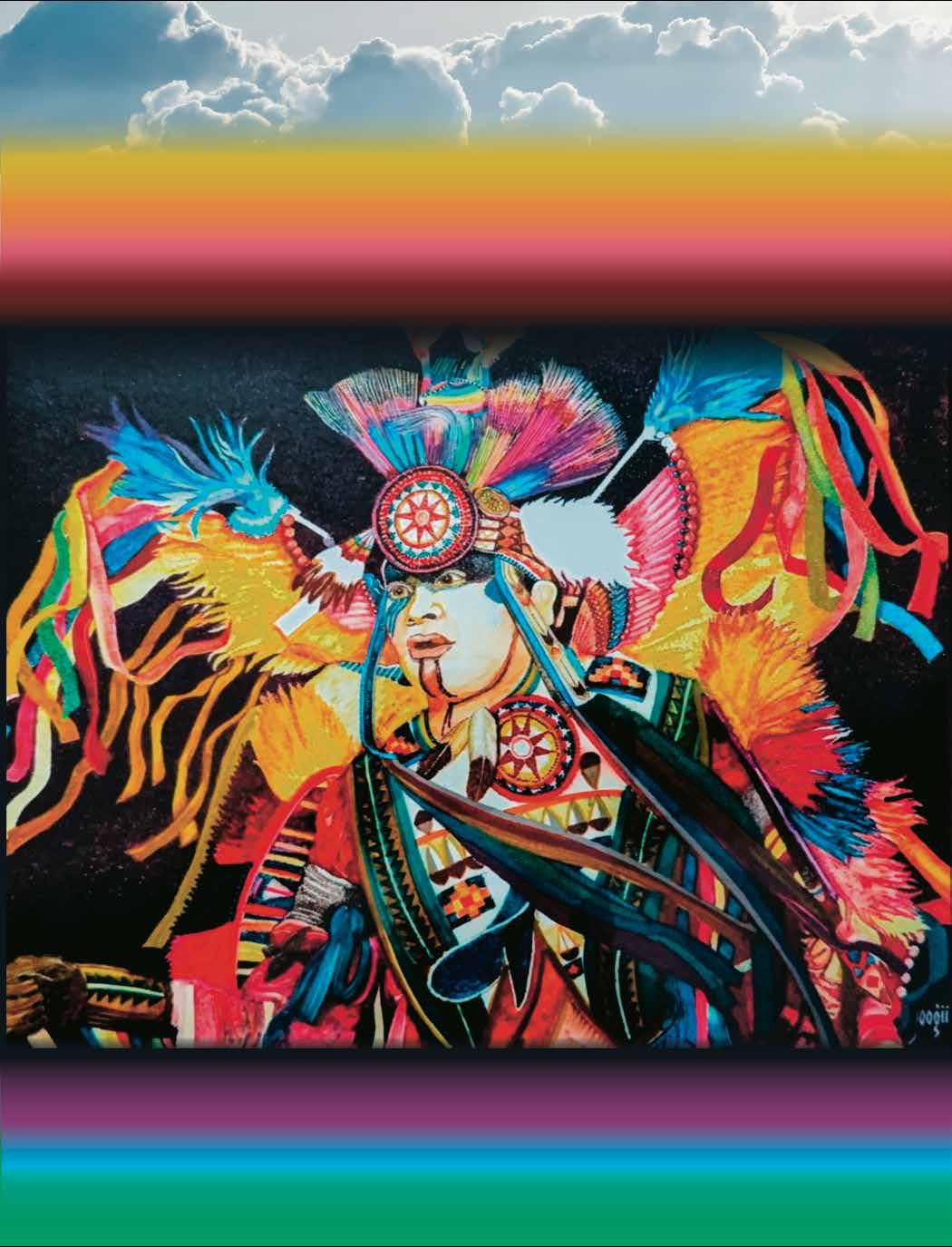
2025 August #253

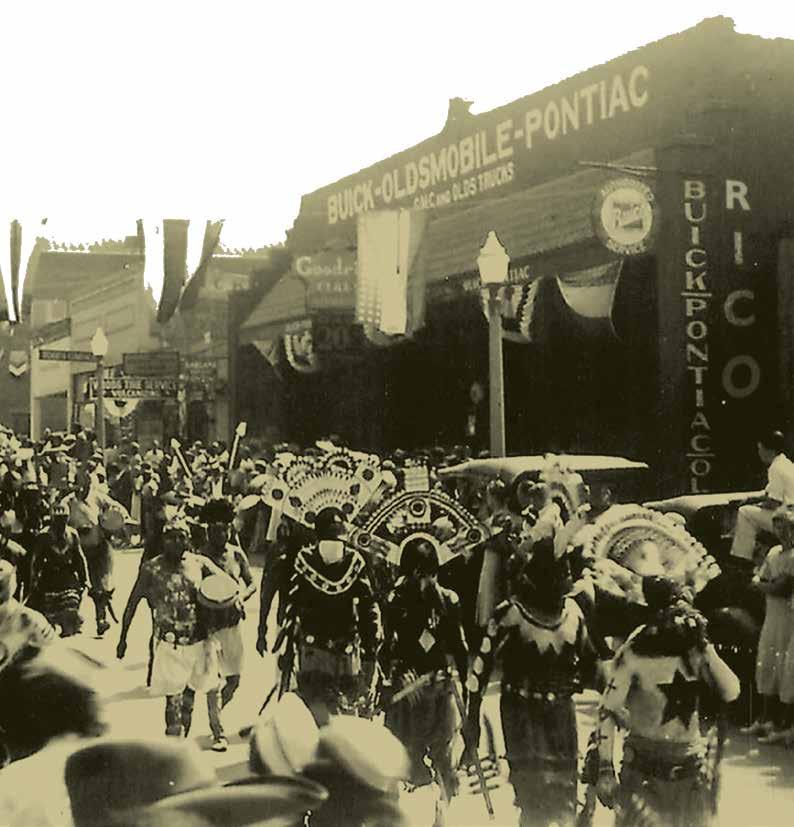



2025 August #253




The Geographic Information Systems (GIS) Division plays a vital role for the City by gathering and maintaining essential geographic data. The GIS staff compile a variety of information, including E-911 addressing, utilities, infrastructure, buildings, land records, and details about the community’s geography and demographics. This treasure trove of data enables city leaders to make informed decisions for both the government and the community, and it serves as a key resource for boosting economic development. GIS data is used by several city departments, including Tourism and Marketing, General Services, Utilities, Planning, Public Works, and the City Attorney’s Office. The GIS department collaborates with the McKinley County GIS Center to enhance GIS services.
The GIS team is excited to work on a fantastic project to develop a public trail system for the Gallup area! The goal is to create trails where everyone community members and visitors alike can enjoy the fresh air and participate in outdoor activities such as hiking, running, and biking. To make this happen, data is carefully gathered using a method called “line feature” that helps capture essential details like elevation, coordinates, and distance. This involves connecting a series of points called vertices to outline a smooth trail. Line features are a key part of GIS data, along with points and polygons.
When a line feature is selected, it includes a pop-up containing an attribute table to identify specific remarks, trail name, elevation, and photos of the particular area. These pop-ups are configurable, allowing map users access to the trail information displayed.
Users can find a range of helpful tools in the right-side panel of the web map that can make analyzing any trail event much easier and support your planning efforts. Included are handy features like search bars, contact details, and filtering options to quickly find the information needed.
Legend Tool:

A map legend on a web map serves as an essential guide, clarifying the meanings of the various symbols and colors representing the features displayed. It functions like a key, simplifying the map’s visual language for easier comprehension. With the legend, it is easy to identify what each element signifies. Moreover, an advantageous feature of legends on web maps
is the ability to update automatically when making adjustments, such as toggling layers on or off or altering the map’s scale, ensuring that users always have accurate information at the disposal.
Elevation Tool:
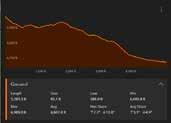
Get ready for an exciting new feature, the “Elevation” tool, now available for a thrilling analysis of trail depth. This innovative option is a game-changer for everyone who loves the great outdoors. It is essential for ensuring safety, optimizing hiking adventures, and exploring the unique characteristics of the terrain. With this invaluable data, hikers, trail builders, and land managers can easily assess trail difficulty, map out optimal routes, and make informed decisions about trail design and maintenance. Embrace the adventure ahead with the power of Elevation at your fingertips.
Measuring Tool:

Using the measuring tool is an enjoyable way to explore distances and areas directly on the map! Users can easily find these tools in the map’s interface. To get started, click on the map to set your starting point, and then continue clicking to add points along the path or shape to measure. The results, such as distance or area, will appear right on the map or in a dedicated measurement window.


City GIS Division:
IT Director: Suzanne Begay
GIS Coordinator: Casey Yazzie
GIS Technician: Linda Lee


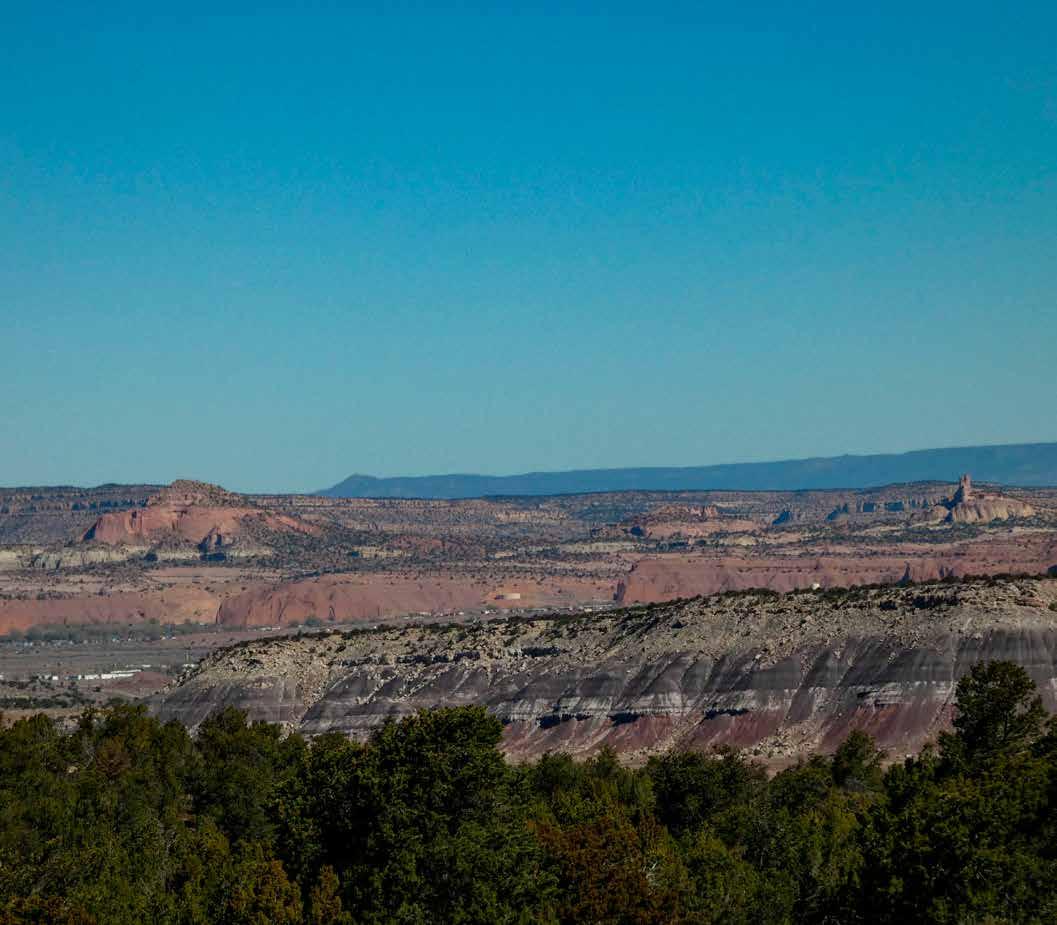

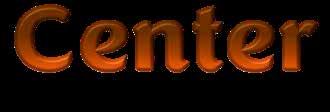


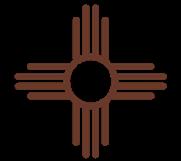


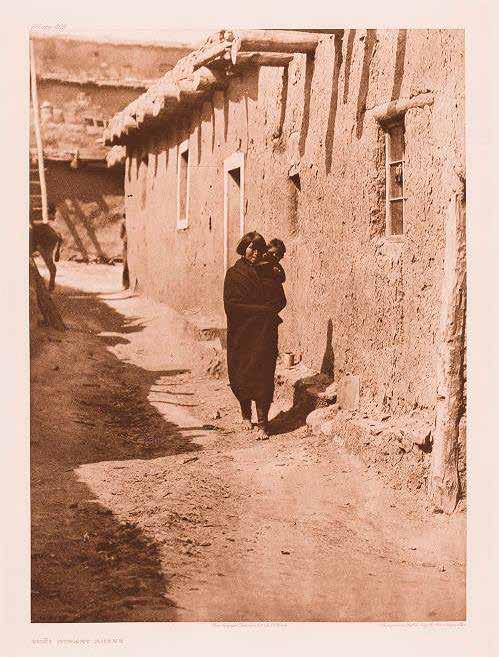



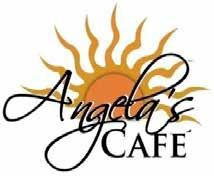

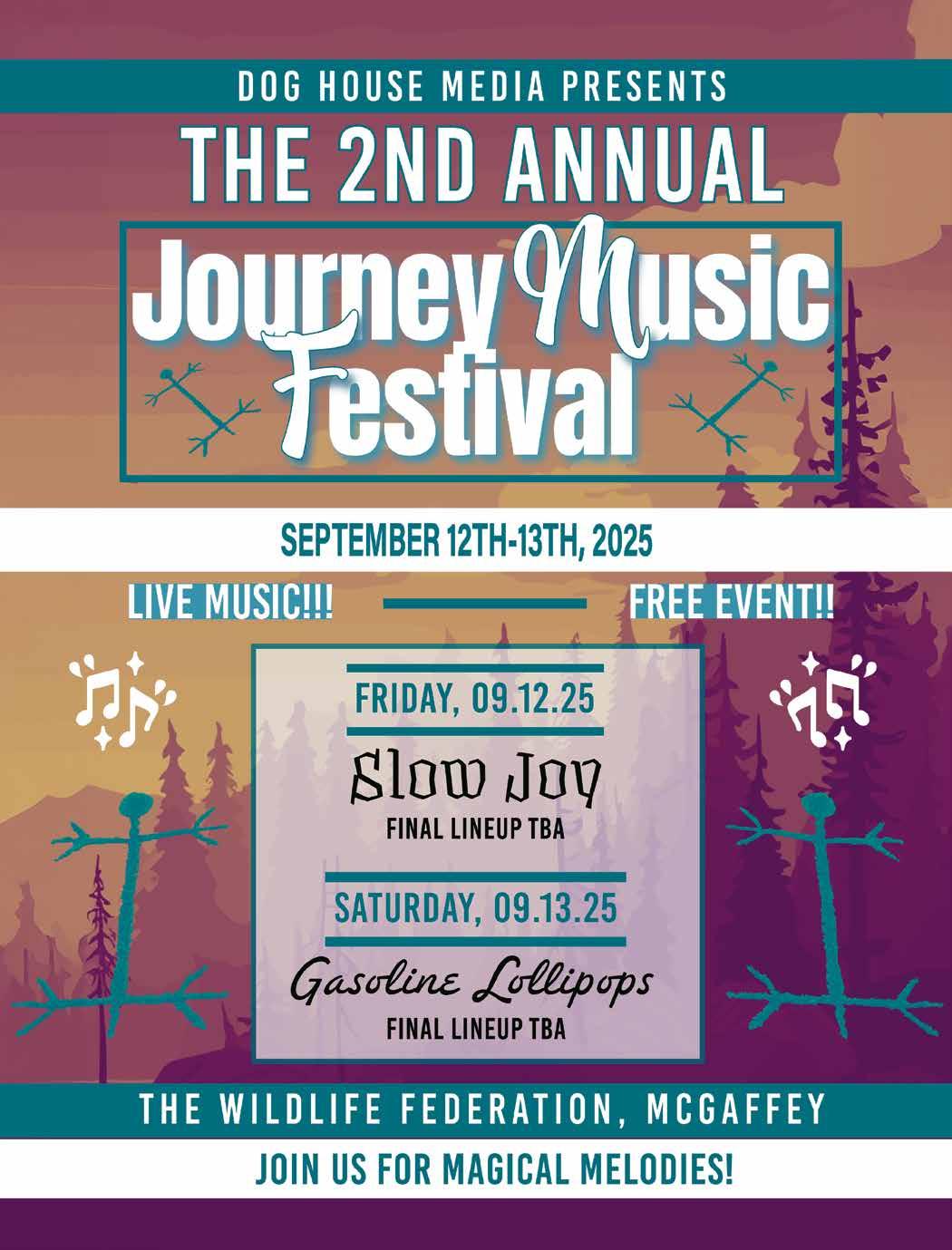

Some of you are familiar with the timeless saying, “Treat others how you want to be treated.” It’s somewhat a guiding principle rooted in empathy and mutual respect—and undoubtedly, it’s decent advice. Still, as I reflect on a recent random Sunday afternoon conversation with my Great Uncle, grandmother, mom and dad, I’ve come to believe that another idea deserves equal attention: “We teach others how to treat us.”
Both concepts hold value, and I hope to pass them along to my children well. But many of us may have grown up hearing only the timeless phrase, without learning how to establish the latter in practice. If you were taught and/or grasped-- to expect and command respect through boundaries, you likely navigate relationships with more ease. For those of us who approach the world with more sensitivity—sometimes to a fault—it can be easy to fall into patterns where others take advantage and abuse the kindness, a tale as old as time, right?
As most of us know, not everyone operates from a place of goodwill. Some people, shaped by difficult experiences—or perhaps by something less visible—may behave in ways that are manipulative, self-serving, or even subtly harmful. What makes things especially complex is that these individuals don’t always present themselves truthfully/ obviously. They may appear charismatic, helpful, and

engaging—traits that make it harder to recognize when our trust is being misused and abused.
While it’s important to extend kindness to others, it’s necessary to set clear boundaries for ourselves.
Communicating when something feels off, when words hurt, or when behavior crosses a line. Doing so is not weakness—it’s wisdom. It’s tempting to downplay discomfort in the name of appearing “strong” or the idea of “don’t let them see it bothers you”, but silence can sometimes be misinterpreted as permission to continue the mistreatment and push even further. So, I say go ahead and cry in front of people, it doesn’t make you any less, and if someone says it does, they’re wrong. You do not lose relevance just because you cry and really they should be ashamed to make you cry.
That said, asserting yourself doesn’t mean abandoning decency or kindness. There’s a hard line between being clear and being cruel. Confidence doesn’t require arrogance, lying, and loudness, and firmness doesn’t equate to harshness. The idea isn’t to push others away, but rather to build relationships rooted in respect and truth.
In closing, I offer this as something to think about: Does the balance of both ideas equal a better life when it comes to any and all relationships (work, friendship, romantic, etc.) or is it better to follow only one of the ideas? And if so, which one?

Quilting Supplies & Fabric
Machines
Saturday August 23 9am-4pm, $45 Chicken Scratch Table Runner. Another kit from the Chicken fabric group. Instructor: Lauren Anderson. Level, intermediate

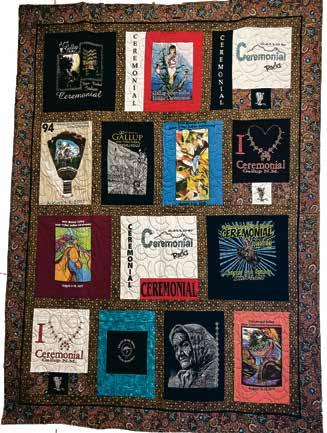
Saturday August 30 9am - 4pm, $5 Open Sew & Embroidery. Come and use the classroom and work on those unfinished projects or get a jump start for Christmas 2025. Gather and mingle, make some new friends. 104 W. Coal Avenue • 505-722-9414 www.gallupservicemart.com
Ceremonial Cover Quilt by Kathleen Arviso
Hours: Monday-Saturday 9am to 5pm
When you finish these puzzles, bring them to our office at 210 E. Aztec Ave, оr take a pic with your phone and email it to gallupjourney@gmail.com. Don’t forget to include your name.
Beverly Abeita
R Morris
Lois Becenti
Will Yazzie
DK & Footies
Jaye Smith
Thomas Gomez
W.G Curley

Jamie Atcitty-Begay
Enrique Pieras
Sara Landavazo
Maureen Bia
Doma
A Roan
Leesha Grey
Ardaniel Begay
E. Skeet
Niomi Johnson
Shanti Nulls
Richard L

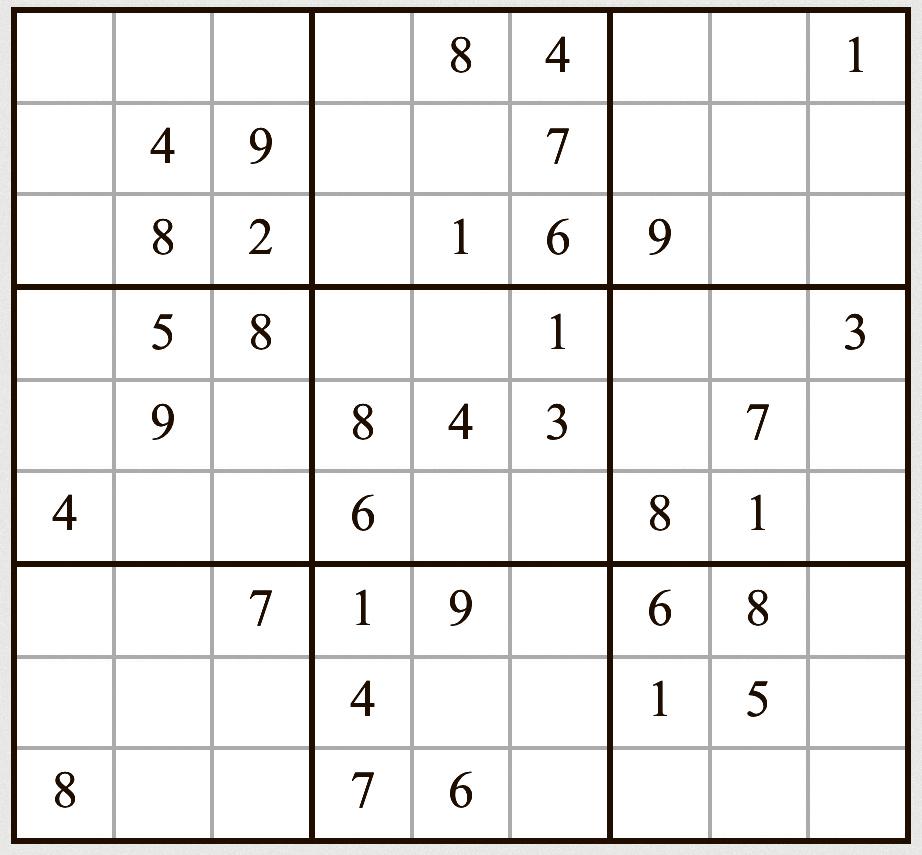

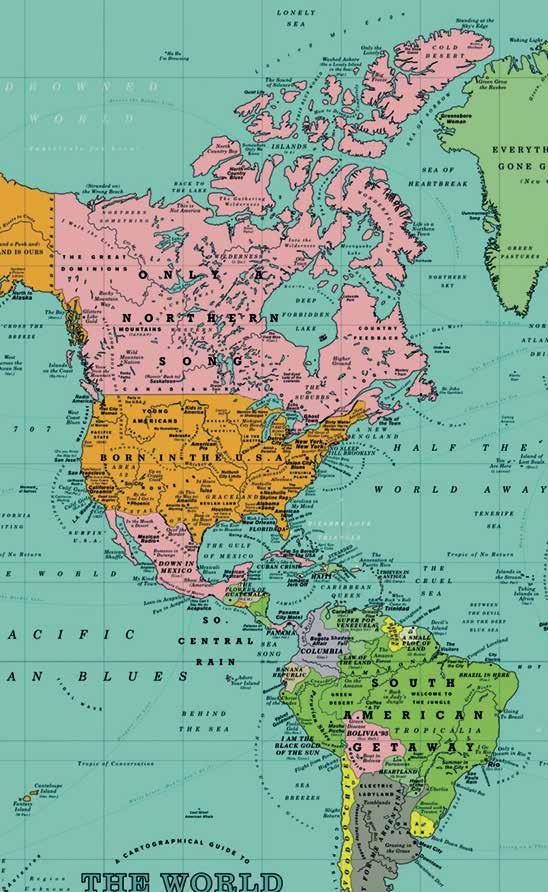

Caleb, Selena, and Carlos Shirley, grandkids of Deborah Yellowhorse, enjoyed a fun-filled, two-week, mid-summer road trip to Las Vegas, L.A. and San Diego (Little Italy and Padres baseball game in San Diego photos).



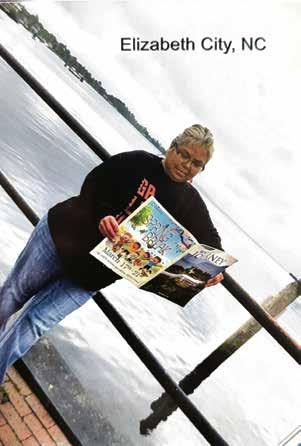

As you journey to new places, let your reading travel with you! Bring us along for the ride and share your adventures with our community.Send photos and stories to gallupjourney@gmail. com (We want to find out your favorite meals at your favorite restaurants!)


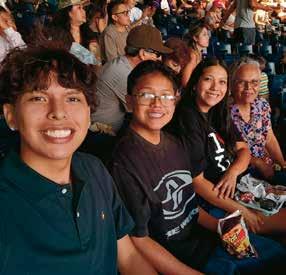
Caleb, Selena, and Carlos Shirley, grandkids of Deborah Yellowhorse, enjoyed a fun-filled, two-week, midsummer road trip to Las Vegas, L.A. and San Diego (Little Italy and Padres baseball game in San Diego photos)
August 1
Dear Gallupians, On behalf of Doc Lawrence Andrade, Dr. Aedra Andrade, and our children, we want to thank everyone for the last 22 amazing years in my hometown. 22 years ago, this community welcomed Aedra and I back home as we began our medical career. You watched as our family grew from just the two of us to our current family. You supported us through the loss of our beautiful Angel, Santana Milagros Teresa, and then the loss of my parents. Your support helped us through those incredibly challenging times. We shared tears and grieved together, but also shared laughs, fun, and moments of joy, as well as pride in our community. This wonderful community has meant the world to us and we are truly humbled that you entrusted your medical care to us. We have learned from all of you as we strived to provide excellent care to every patient with compassion and respect, even though we don’t always agree with each other. The community of Gallup is truly an amazing and special place with the most kind, generous and loving people you will find anywhere in the country.

and state taxes for small businesses), decreasing Medicare and Medicaid reimbursements, and lack of medical specialists in New Mexico have made it increasingly difficult to provide the quality care we want to give our patients. We recently made the very difficult decision to leave our hometown, community and friends and move to Joplin, Missouri. We cannot fully express how grateful we are to each and every one of you for your unwavering support over the last 22 years. You treated us like family and we will never forget you. We don’t know what the future holds, but we trust God’s plans for us. We will definitely be back to visit, so this is not goodbye. Please take care of yourselves, continue to respect one another, and remain the amazing community we were blessed to be a part of for the last 22 years.
God is not dead! God bless you all!
With much love,
Unfortunately, a very punitive medical malpractice system, high taxes (especially gross receipts taxes
Doc Lawrence Andrade, Doctor Aedra Andrade, Iliana Andrade, Xavier Andrade, Ysabelle Andrade, and forever in our hearts, Santana Milagros Teresa Andrade
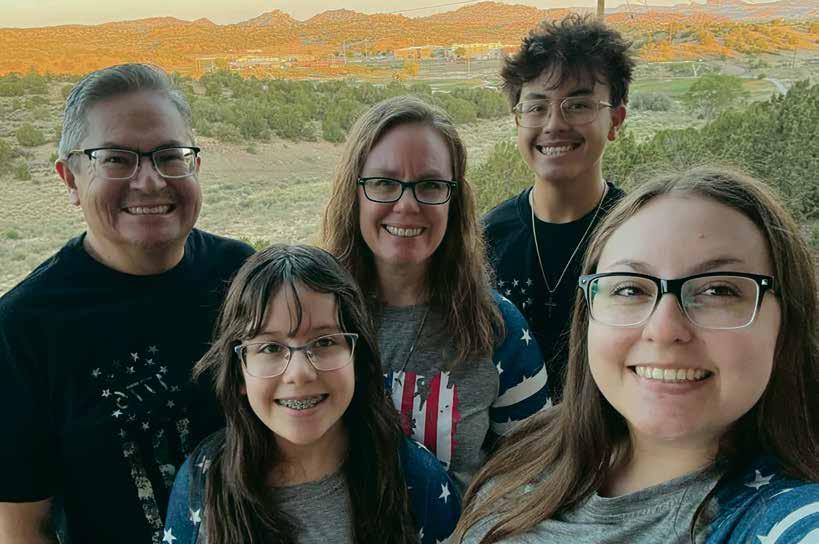
Catherine A Miller Elementary 6102 Challenger Road
Church Rock, NM 87311
Phone: (505) 721-1400Fax: (505) 721-1499
Chee Dodge Elementary 641 N HWY 491
Yatahey, NM 87375
Phone: (505) 721-1300Fax: (505) 721-5699
Crownpoint Elementary #1 Codetalker Dr. P.O. Box 709 Crownpoint, NM 87313
Phone: (505) 721-1500Fax: (505) 721-1599
David Skeet Elementary
RT 45 Jones Ranch Rd P.O. Box 128 Vanderwagon, NM 87326
Phone: (505) 721-1700Fax: (505) 721-1799
Del Norte Elementary
700 W Wilson Gallup, NM 87301
Phone: (505) 721-5200Fax: (505) 721-5299
Indian Hills Elementary 3604 Ciniza Dr. Gallup, NM 87301
Phone: (505) 721-2900Fax: (505) 721-2999
Jefferson Elementary 300 Mollica Gallup, NM 87301
Phone: (505) 721-3000Fax: (505) 721-3099
Lincoln Elementary 801 W Hill Gallup, NM 87301
Phone: (505) 721-3400Fax: (505) 721-3499
Navajo Elementary
123 Cedar Ave P.O. Box 1012 Navajo, NM 87328
Phone: (505) 721-3500Fax: (505) 721-3599
Ramah Elementary
27 Lewis St. P.O. Box 869 Ramah, NM 87321
Phone: (505) 721-3700Fax: (505) 721-3799
Red Rock Elementary
1305 Red Rock Dr. Gallup, NM 87301
Phone: (505) 721-3900Fax: (505) 721-3999

Stagecoach Elementary
725 Freedom Dr.
Gallup, NM 87301
Phone: (505) 721-4300Fax: (505) 721-4399
Thoreau Elementary
#6 Fourth Ave P.O. Box 839
Thoreau, NM 87323
Phone: (505) 721-4400Fax: (505) 721-4499
Tobe Turpen Elementary
3310 Manuelito
Gallup, NM 87301
Phone: (505) 721-5000Fax: (505) 721-5099
Tohatchi Elementary
100 Chuska Rd P.O. Box 31
Tohatchi, NM 87325
Phone: (505) 721-4700Fax: (505) 721-4799
Twin Lakes Elementary
19 Mi. N Hwy 491 HC 30 P.O. Box 40
Gallup, NM 87301
Phone: (505) 721-5100Fax: (505) 721-5199
Chief Manuelito Middle School
1325 Rico St.
Gallup, NM 87301
Phone: (505) 721-5600Fax: (505) 721-5699
Crownpoint Middle School
#1 Eagle Dr.
Crownpoint, NM 87313
Phone: (505) 721-5400Fax: (505) 721-5499
Gallup Middle School
1000 S. Grandview
Gallup, NM 87301
Phone: (505) 721-2700Fax: (505) 721-2799
Kennedy Middle School
600 Boardman
Gallup, NM 87301
Phone: (505) 721-3100Fax: (505) 721-3199
Navajo Middle School
West Walnut Ave.
Navajo, NM 87328
Phone: (505) 721-5300Fax: (505) 721-5399
Thoreau Middle School
#8 Hawk Cir P.O. Box 787
Thoreau, NM 87323
Phone: (505) 721-4600Fax: (505) 721-4699
Tohatchi Middle School
Mid School Lane
Tohatchi, NM 87325
Phone: (505) 721-4900Fax: (505) 721-4999
Crownpoint High School #1 Eagle Dr. P.O. Box 700
Crownpoint, NM 87313
Phone: (505) 721-1600Fax: (505) 721-1699
Gallup Central High School
325 Marguerite, Gallup, NM 87301
Phone: (505) 721-2400Fax: (505) 721-2499
Gallup High School 1055 Rico St. Gallup, NM 87301
Phone: (505) 721-2500Fax: (505) 721-2556
Hiroshi Miyamura High School 680 Boardman
Gallup, NM 87301
Phone: (505) 721-1900Fax: (505) 721-1999
Navajo Pine High School 1 Walnut Ave, Navajo, NM 87328
Phone: (505) 721-3600Fax: (505) 721-3699
Ramah High School 74 S Bloomfield Ave, Ramah, NM 87321
Phone: (505) 721-3800Fax: (505) 721-3899
Thoreau High School 4 Hawk Circle
Thoreau, NM 87323
Phone: (505) 721-4500Fax: (505) 721-4599
Tohatchi High School
Cougar Ln. N, US-491
Tohatchi, NM 87325
Phone: (505) 721-4800Fax: (505) 721-4899
Tse Yi Gai High School
HCR 79 P.O. Box 3068
Cuba, NM 87013
Phone: (505) 721-5500Fax: (505) 721-5599
McKinley Academy UNM Gallup - 705 Gurley #27
Gallup, NM 87301
Phone: (505) 721-4200Fax: (505) 721-4299


Listed are the regularly scheduled 2025-2026 Board of Education meetings. All meetings will begin at 1:00 p.m. in the Board Room of the Student Support Center, 640 Boardman, Gallup, New Mexico unless indicated otherwise. An agenda will be posted on www.gmcs.org website seventy-two (72) hours before the meeting.
JULY 21, 2025
AUGUST 11, 2025
SEPTEMBER 8, 2025
SEPTEMBER 29, 2025
OCTOBER 20, 2025
NOVEMBER 10, 2025
DECEMBER 15, 2025
JANUARY 26, 2026
FEBRUARY 17, 2026
MARCH 9, 2026
MARCH 30, 2026
APRIL 20, 2026
MAY 11, 2026
JUNE 8, 2026
BOARD ROOM
BOARD ROOM
BOARD ROOM
BOARD ROOM
BOARD ROOM
BOARD ROOM
BOARD ROOM
BOARD ROOM
BOARD ROOM
BOARD ROOM
BOARD ROOM
BOARD ROOM
BOARD ROOM
BOARD ROOM
AGENDA ITEMS DUE
JULY 14, 2025
AUGUST 4, 2025
SEPTEMBER 2, 2025
SEPTEMBER 22, 2025
OCTOBER 13, 2025
NOVEMBER 3, 2025
DECEMBER 8, 2025
JANUARY 20, 2026
FEBRUARY 9, 2026
MARCH 2, 2026
MARCH 23, 2026
APRIL 13, 2026
MAY 4, 2026
JUNE 1, 2026

Serving Gallup and Surrounding Areas Since 1946


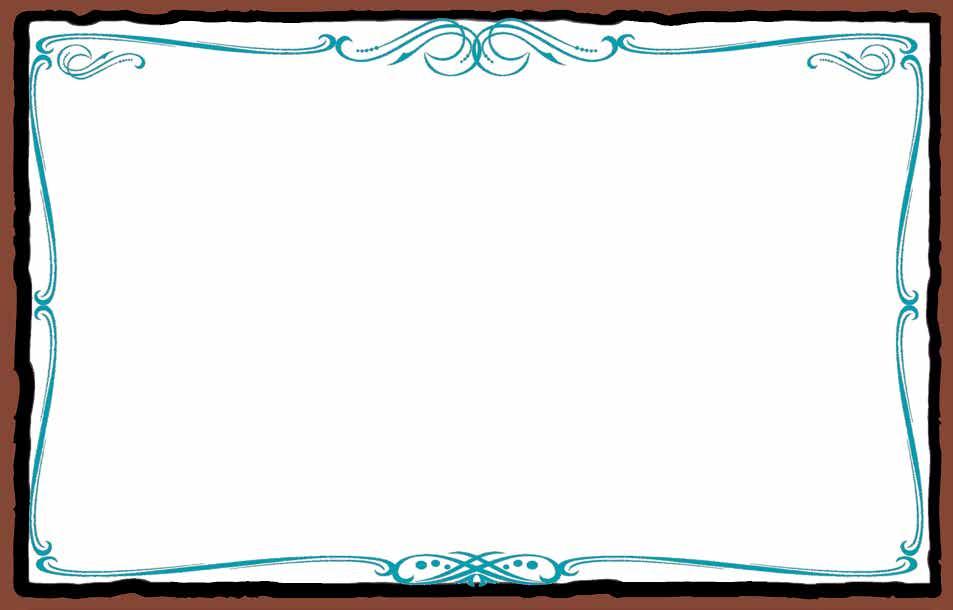

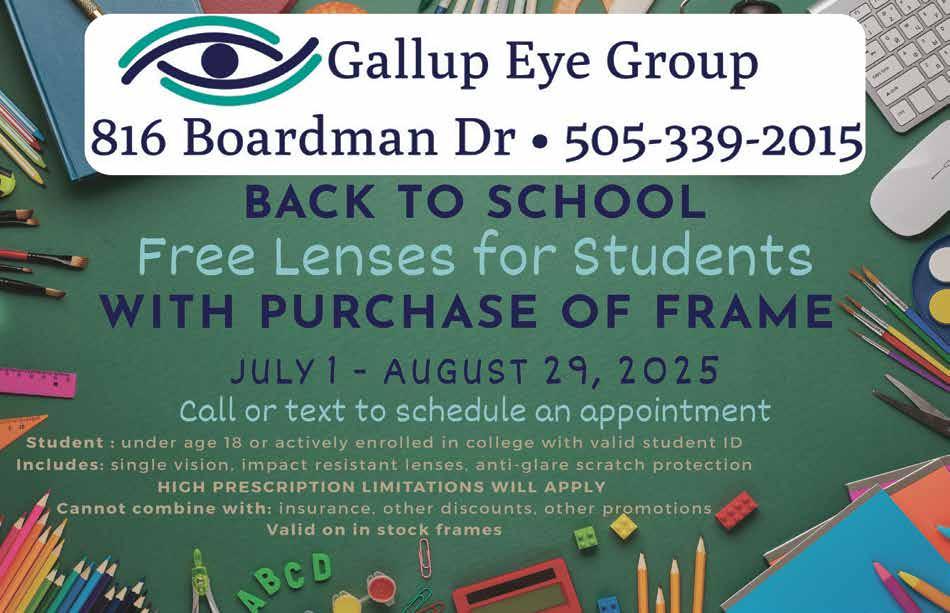

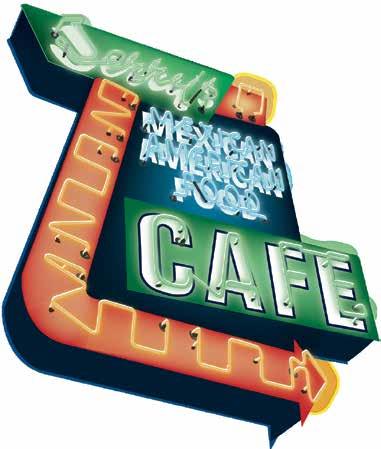
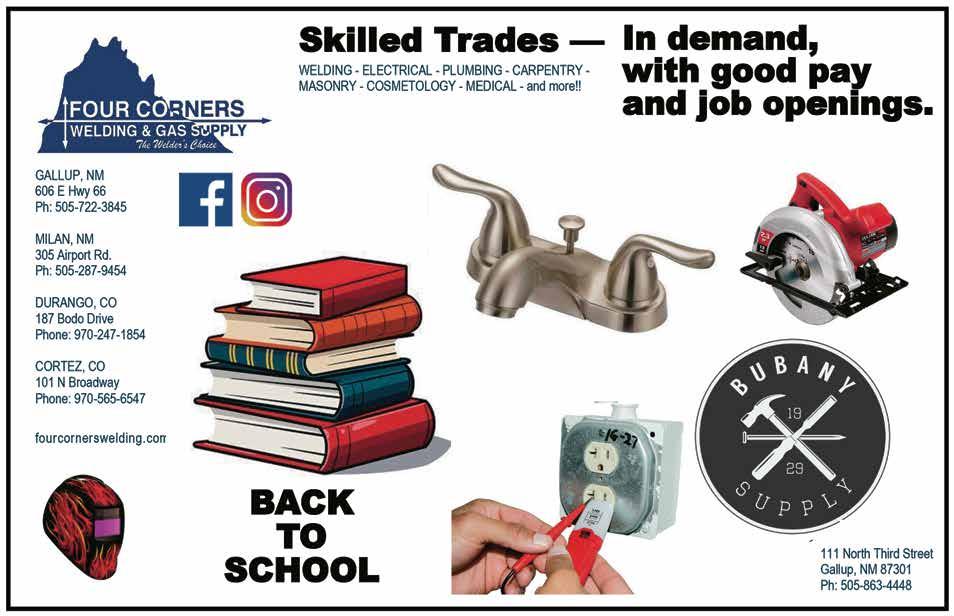

Richard F. Kontz, Executive Director, Gallup Housing Authority
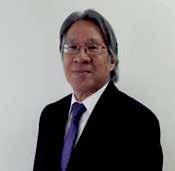
I have been reviewing various editorials and articles printed in the local press on the “alcohol problem” as it relates to street people and homelessness; and after previously talking with several people who operate at the ground level with this problem it feels like the following approach seems to be the common thought process.
1 – The eventual outcome of the “continuum of care” for the homeless should result in two things: They eventually get and hold a job and they eventually obtain affordable housing. In the process they become productive citizens of Gallup.
2 – The pipeline for housing would be: Homelessness to shelter to transitional housing to low-income rental housing to affordable home ownership.
3 – To get off the streets they first need to be detoxed and linked to sound counseling so they can begin to break free from their addictions and other issues which keep them on the streets.
4 – Then they would be placed into shelter housing if they are willing to stay in a counseling program. Counseling should not only be proven secular counseling methods but should also allow for spiritual counseling of their choice. And it should be evidence based.
5 – Eventually they will receive job counseling, education and job skills development making them able to get a job and move into transitional housing. Criteria would be set up where they stay there if they continue their counseling and continue with jobs training and development and hold a job.
6 – After they have been stable through counseling, obtained and held a job they can be graduated out of transitional housing into either low income or market rate rental housing depending on the level of income they make.
7 – After time progresses eventually, they would make enough income to afford to purchase a home of their own. Also, part of their program of education, training and counseling would be to learn to manage their finances and credit in a manner to position them to purchase their own home.
The people I talked to all believe that is the path; and that we as a community need to put the pieces of the puzzle together to make it work.
However, there are major limiting factors to be considered:
[1] First, is the false assumption that all the street people need is “high quality professional” counseling and that all these people wandering the streets are just waiting for the offer of perfect counseling. Well, folks that just is not true. I have talked with many of these people – most do not want help – they choose that lifestyle.
[2] The second is the lack of [meaningful] Jobs being created in our local economy. This would be a job which pays a level of pay, which enables a person to not only support themselves and their family but, pays enough to allow for saving of funds toward the purchase of an affordable house.
There are other factors to be considered but these are the main two limiting factors.

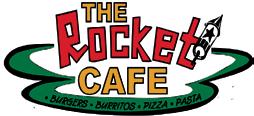
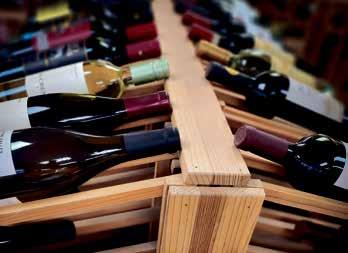
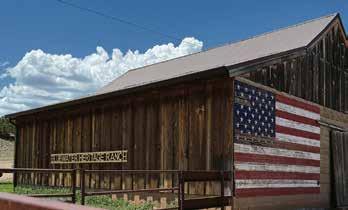

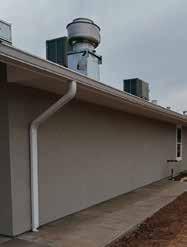


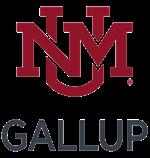
By Richard Reyes
UNM-Gallup Students discover their own stories via research projects about local history and cultures
GALLUP, N.M. — In a unique class at The University of New Mexico-Gallup, students have been learning how to use professional and technical communication skills to share their personal connections to the region’s Indigenous cultures, traditions and stories.
Not only are students earning college credits for their research and writing assignments, but their work is contributing to a project in collaboration with the George Galanis Multicultural Center in downtown Gallup.
“The students really drill down into Gallup’s culture and history,” Associate Professor Dr. Tracy Lassiter said of her class. “They’re collecting stories from people before those stories are lost — as much as possible — but then recognizing that their own story becomes part of that story too.”
Lassiter explained that personal stories are the pivot point for the students’ writing assignments, which helps the technical writing aspects of the class come alive and become more engaging.
Students are tasked with conducting research about a topic, starting at UNM-Gallup’s Zollinger Library.
From there, students may visit other sites and locations in the area to track down other sources of information.
Students also interview local people, such as trading post owners or weavers, to gain insight from their first-hand knowledge.
The finished projects are intended to be used by the multicultural center — either to display in racks alongside exhibits in the museum or to help with educational outreach at local schools.
Lassiter said they are also looking into publication possibilities to share the students’ work beyond the museum.
Silversmithing research stumbles into family connection
At the end of the spring semester in May, Lassiter’s students delivered their presentations in class, focusing on different aspects of Indigenous traditions and stories.
Student Lamar Elliott used a projector to display printed photographs for his presentation on silversmithing, which he found a deep family connection to through this research.
Elliott pursued the subject after his older brother, who lives in Florida, found a watch made by Frank
Armstrong, a silversmith who is local to the Gallup area. Elliott was unsuccessful in contacting Armstrong directly, but as he dug for more information, he learned about other prominent silversmiths, including Kenneth Begay and Fred Peshlakai.
He also realized recently that his own grandfather was a silversmith. Elliott’s grandfather died before he was born, but his mother passed down a piece of his grandfather’s jewelry to him — a necklace made from scrap.
“I thought it was really amazing how I sort of chose this topic as a whim, but the more I got into finding and researching this topic, the closer I got to it with my family history and possible connections,” Elliott said.
A personal look inside a rite of passage
Student Ryanelle Velarde created a PowerPoint slideshow with personal photos showcasing the traditional Navajo kinaaldá, a ceremony that celebrates a girl’s transition into adulthood — typically around the age of 11-13 years old.
Velarde shared photos from her own kinaaldá when she was 9 years old as well as her niece’s kinaaldá. Velarde explained an older woman will guide and direct the girl during the ceremony. Velarde had the privilege of taking on that role for her niece in February.
“So I got to have first-hand experience with all of that,” she said. “It was very nerve-wracking.”
Velarde shared the origins of the kinaaldá and detailed each part of the four-day ceremony, which includes building a fire that lasts the entire time, running east toward the sun every morning, wearing traditional clothing, baking a cake and sharing it with guests, and more.
The kinaaldá also serves as a way for Navajo elders to pass down their knowledge and traditions to the youth.
“It is a good time for a community to come together, and it’s meant to bring positivity, and you’re just supposed to have a good mindset through it all,” Velarde said. “And so that’s all I hoped for during my niece’s [ceremony]. It was a real eye-opening and inspiring thing.”
Star stories from the Southwest
Student Katie Schultz created an activity booklet to compliment her presentation on Southwest star stories and constellations.
Schultz shared that she has always looked toward the stars with fascination. She even named her children Orion and Nova.
She said she has been interested in constellations and their connections to Indigenous stories for about a decade. However, she encountered difficulties in learning more about star stories either because people weren’t familiar with them or people were reluctant to share.
Schultz noted that her children are half Navajo, so she wants to be able to teach them about their culture, but they don’t many have relatives to guide them and Schultz herself doesn’t have answers to their questions.
“So, this is something to be able to show to them,” she said of the activity booklet. “And they love it. Now, they’re starting to come to this understanding of their namesake and stuff. … So this is just like a starter. These aren’t my stories, really, to tell. I found so much information and lots and lots of stories, but this is more of an introduction.”
Sandra Freeland, the education coordinator for the George Galanis Multicultural Center, sat in on the class to hear the presentations and offer advice on where students could do more research on their subjects and how to take their projects to the next level.
For example, Freeland suggested that Elliot visit the House of Stamps, a silversmith shop located on the west side of Gallup to gain more insight on his subject.
Freeland also honed in on a common theme that emerged from the presentations: cultural fusion.
She noted how Velarde mentioned buying ground corn for her niece’s kinaaldá rather than her niece grinding it herself — an example of how modern practices can be incorporated into traditional ceremonies.
Freeland also talked about Schultz’s efforts to learn about Navajo star stories that are told only during certain parts of the year because of their sacredness.
Freeland suggested a cultural fusion is needed in order to “translate” these subjects for younger generations, so young people can learn about their culture and find balance between traditional and modern ways of life.
“We have to have a cultural, ethical guideline so that it’s still valid and appropriate, but not secretive,” she said.
Technical writing comes alive
Lassiter explained that inviting Freeland to listen to the presentations gives students a simulated ex-
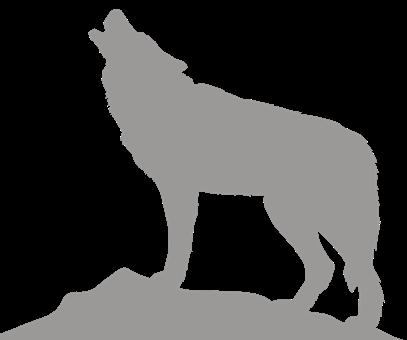
perience of making a pitch to a client in the professional world.
The class, ENGL2210: Professional and Technical Communication, seeks to introduce students to the different types of documents and correspondence that they may create in their professional careers, but with a personal touch.
In the Fall 2023 semester, Lassiter first tried the new personal approach to the class to help her students engage more with their assignments. She challenged students to write about local and personal subjects, which made the research process come alive.
“They find it to be rewarding and interesting,” she said. “And at the same time, we’re contributing something to the community. And it’s done so much to change the tenor and the purpose of tech writing … to make it something more alive and robust.”
Freeland echoed the sentiment after she thanked Lassiter’s students for their presentations.
“It’s a good way to use [these topics] to connect technical writing skills, which we all need and you all need to survive in this generation,” Freeland said. “But to do it through personal stories and connection to your community, that makes it meaningful.”
Lassiter is scheduled to teach this course again during the Fall 2025 semester from 8 a.m.-9:15 a.m. Tuesdays and Thursdays. As of July 1, four students were enrolled in the class, and Lassiter hopes more will sign up.
For more information about ENGL2210: Professional and Technical Communication, visit the UNM-Gallup Academic Catalog.
To apply to UNM-Gallup for the Fall 2025 semester, visit the UNM-Gallup Admissions website.


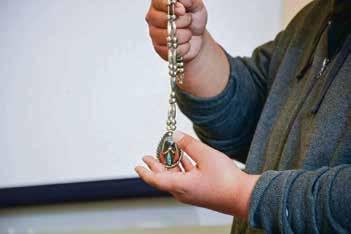


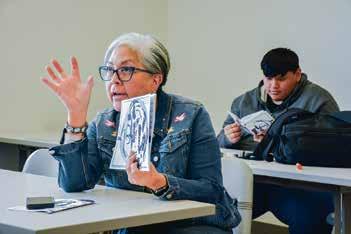


By Colt Balok
Afew months ago, most people in Gallup didn’t know they could fly nonstop to Las Vegas. Today, that’s changing.
Advanced Air’s new route connecting Gallup to Vegas is more than just convenient—it’s a breakthrough. It’s saving people hours of drive time, reducing stress, and opening up new opportunities for both business and leisure. It’s a step toward regional connectivity we haven’t seen before, and it’s something worth celebrating.
It was Matt Robinson with the City of Gallup who had the idea to partner with our team to help promote the route in a new way—through storytelling. And that’s exactly what we set out to do. We gathered a group of locals, took the inaugural flight to Vegas, and filmed a travel feature to show what’s possible when small-town charm meets big-city access.
“Very fun! Totally makes me want to charter a flight out of Gallup. I had no idea that was an option!” said Monique Jacobson, former New Mexico Tourism Secretary, after seeing the video. That’s the kind of reaction we’ve been hearing over and over—from people who are surprised, excited, and ready to book a trip.
And it’s not just leisure travelers taking notice.
Michael Schaaf, city councilor in Gallup, reached out to express his excitement about the route and the new energy it brings to the city.
On our trip, we toured Allegiant Stadium, caught live shows on the Strip, shared meals, and laughed late into the night. But more than that, we saw how travel strengthens bonds. We went as individuals, but came back as friends. It was proof that connection—real connection—can start with something as simple as a 90-minute flight.
One of my favorite parts? Anyone can gather a group of friends, buy 8 tickets, and enjoy a private charter experience of their own. It’s more accessible than people think—and way more fun.
This route is working. It’s being used. It’s being noticed.
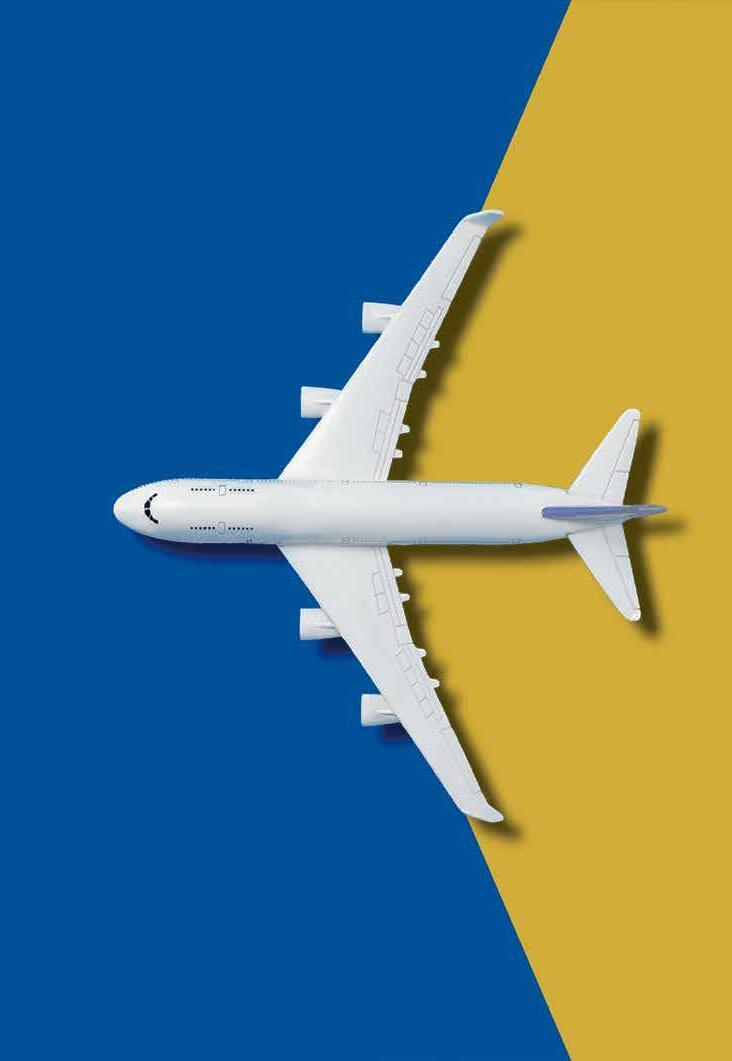


But more importantly, it’s making Gallup feel a little closer to the rest of the world.


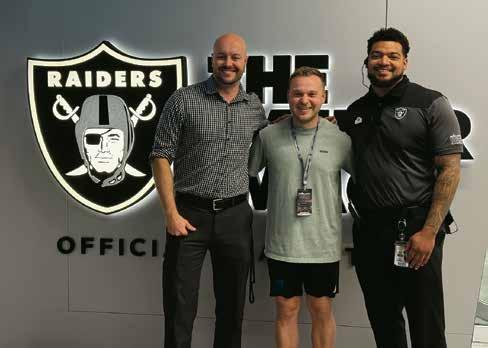
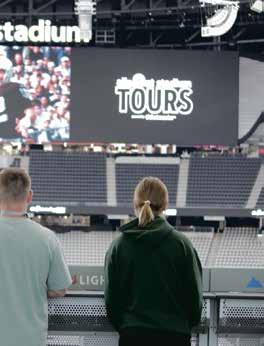

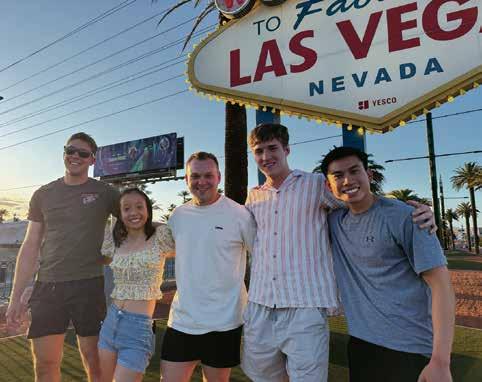

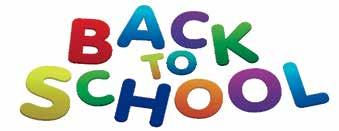
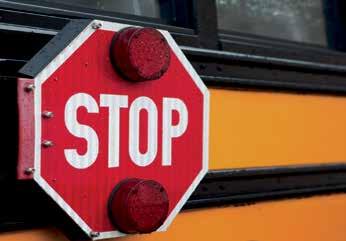

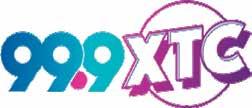



By Gabrielle Myers
Apache Spirit isn’t just a band; it’s a family legacy rooted deeply in the traditions and stories of the Apache community. Spanning three generations and over five decades, this group carries the heartbeat of reservation life into every song, every performance. From heartfelt originals about and honoring ceremonies to lively covers that get the crowd dancing, Apache Spirit blends heritage and heart into a musical journey that uplifts, inspires, and keeps the spirit alive.
If you had to swap roles in the band for one show, no matter how chaotic, who would you switch with and why?
Kornell: “I would love to play the drums. I’m a drummer at heart. They seem like they have the most fun, but I don’t play drums as much as I want to. I think it would be fun to drum a whole show. I’d love to play all the Spirit originals.”
Who’s the first to crank up the music and turn a regular hangout into a full-on dance party, and what song never fails to get everyone moving?
Lisa: “It would be Renaldo our drummer. He is always blasting music on his JBL speaker listening to La Chona. And he dances to it on top of that! His energy level is all of us put together. He’s a councilman on our reservation and that doesn’t stop him from getting out there and dancing with the people.”
What’s one pre-show ritual or superstition that the rest of the band teases you for, but you swear works?
Gabe: “I don’t do any of that, I’m too serious. I just know we always pray together, and we believe in our prayer that we will have a good show and concentrate on the music and not get nervous just try to do the best we can. I’m sure the other guys they have their thing, but I’m up there in age and I’m too serious.”
Let’s say a food truck names a menu item after your band, what is it, and what’s in it?
Kornell: “We do a song called Indian Car, so it would be an Indian Car burrito, and it would be very zesty and hot served Christmas style, then you can work it off by dancing at our show.”
If your band had a motto or catchphrase (like a superhero team), what would it be and why?

Dominic: "Dance camp! Our goal is to make music people can dance to and have fun. That’s what is getting them out there.”
Fast forward 10 years, what’s something you hope people will say about your music?
Gabe: “Hopefully we’ll still be recording. I would like to see the 3rd and 4th generation join us. I would like to see the kids continue the Spirit style and record with us one day. That’s what I would like to see.”
Lisa: “My father, Matthew "Midnite" Kane Sr., passed away almost 7 years ago now. He was one of the founding members of Apache Spirit. His wish was that we keep it going generation to generation. I’m the first of the 2nd generation and my son is the first of the 3rd generation. We are working on being able to have them take their place in Apache Spirit so they can carry it on.”
How did the band first come together?
Lisa: “Before 1973, my father, Midnite and my uncles, Paschal "Pat" Ethelbah who played bass and sang, Gabriel "Apache Boy" Ethelbah, and Michael “McGee” Ethelbah started playing at a young at school and family functions as the Cedar Creek Ranch Boys. They started playing more and more and it morphed into Apache Spirt and a couple years later, my mom, Lee joined too. From there it took off and throughout the years we have had multiple different members join. My dad was very selective, and he’d bring other talented musicians in to help it keep the music going when his brothers weren’t available, then he started training the second and third generation and here we are at 52 years.”
Gabe: “Our first gig was in boarding school, and I was in 5th grade. My brother Paschal and Midnite picked me up from JFK school in Cedar Creek. My mom was getting me ready and said I was going to play at a dance at Fort

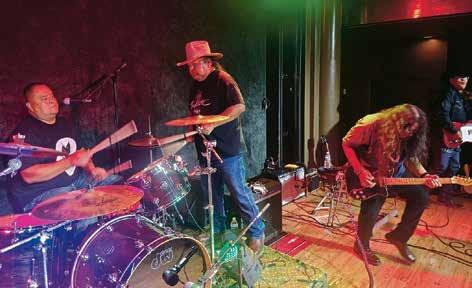
Apache. Prior to that night the guys used to practice in the garage at my dad’s house in Whiteriver. I would go and bang on the drums while the guys were taking a break. They must have been watching while I was drumming because after we had our first gig together at Fort Apache. We didn’t have a name at the time, but word got around fast, and we started playing more. We eventually had to come up with a name and we voted on it. We were the Cedar Ranch Boys then Michael "McGhee" Ethelbah joined us and played rhythm. Our band evolved into Apache Spirit and kept going and it was really fun for us, but we were lacking equipment. My brothers didn’t tell me, but I guess someone bought us some new equipment... we were just kids. It was exciting!”
How would you describe your sound to someone who’s never heard you and what influences shaped it the most?
Lisa: “Our original songs are written about life on the reservation. Whether it be about planting or harvesting corn, or our traditions and ceremonies, we really focus on the simplicity of life on the reservation. We don't want our music to come from a bad place. We want the music to carry something meaningful. We want it to be a free-spirited way to share our gifts through our songs while focusing on positive aspects of life. One of our biggest songs and our very first original is "Indian Cowboy" and that’s what life was. My grandfather Paul Ethelbah was a medicine man who was also a cowboy and a team roper, and my dad was an all-around cowboy, believe it or not. Those different aspects of life are really about the simplicity, and we try to bring that out. We do our best to hold true to the Apache Spirit sound and western feel. We also play some classic rock, because my father really loved classic rock too.”
We also focus on where we're at to decide what music we play. One of our favorite places to play is in Ruidoso, and they love the old classic country, but we might not play some of those old country songs somewhere else because each audience is different. We try to pick songs to keep the people dancing, and we change our music based on our location and audience. We want to make sure we’re integrating everybody and giving everyone an opportunity to come out and dance to the kind of music they like. We try to keep the flow going and the energy up, while also making connections with people on an individual level. It’s always about bringing people together and bringing that quality of music they expect from Apache Spirit. We support each other, and we’re about the music because we want to make my dad and my uncles proud. We want to hold that line and legacy.
Do you see your music as part of a bigger scene, story, or cultural moment? What do you hope it contributes?
Domonic: “I think all of us being Native musicians plays a big role in a movement. People see us and they think, “Yeah, if they can do it, then we can do it too.” When people are looking up at the stage, you can't always tell where they're staring or what exactly they're fascinated by, but it's all the same thing. They probably want to play too. And that's where it starts. So, you have to be kind and listen, especially to the youth, and give them the encouragement to do it. Some people aren’t musically inclined and that’s OK, it may just take a little nudge from us for them to start playing.”
Lisa: “For me, it’s because of the legacy and it is a part of a movement and tradition. A tradition to keep that spirit of being able to point out different aspects of life, or to be able to focus on something that's just ours, as Natives. Music is our medicine. There are all kinds of music now that can be negative,
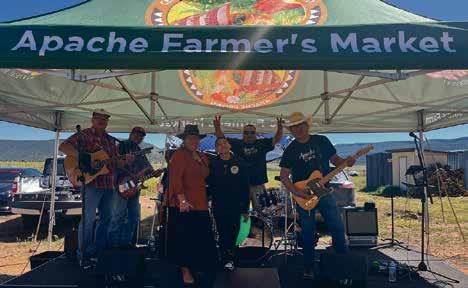
but we don’t want to be part of those types of things. We want to be part of a positive movement. We want to make sure that when people come to our shows, we bless them with the gifts that we have been given, and we want them to bless us with the gifts they have with their dancing, with their energy, their smiles, bringing the fun, and including the elders and the young ones. It’s that give-and-take that’s important and builds lasting relationships.”
Gabe: “I would like to go to all the Apache reservations and give others the chance to be inspired. We want to have more Apache involved, because we are such a small tribe, and we can encourage each other to do something. The only way we can really make things happen is by going to other places, because the resources are finally starting to come out. We’re not getting rich from doing music. We break even or even take a loss, but that’s how we started when we were young, and we didn’t care. We only had $10, but we still said, “We’re going to New Mexico to play.” How are we gonna get there? I don’t know. But we’re gonna make it. That’s kind of how we chugged along, and we want to see that continue. We want to be an inspiration to our family and our youth. I would like to go to different places and see other people get inspired by our music. That’s where I see us.”
Kornell: “I think the timelessness of Apache Spirit has already laid the foundation for that on a great level, because I think both young and old, they know Apache Spirit. That’s what makes it so interesting and powerful from a musical aspect. Apache Spirit has been a band for 52 years! Every time we make that announcement at our shows, the surprise we get from that, it’s a good feeling. It feels good to be a part of something that has been around for that long. The timelessness that comes from it, it’s really a blessing for everybody.”
Renaldo: “I feel honored to be able to play with Apache Spirit. I’m from the same small community, that Midnite and uncles were born into. I’m a councilman for that area and have a deep connection with the community. I’m always saying how happy I am to carry on the music. For me, I know what the expectations were, and we really strive to meet them. Midnite gave each of us the opportunity to grow and I feel honored to work with these guys.”
Apache Spirit is a bridge between generations, a source of inspiration for the youth, and a powerful celebration of Apache culture. As they look toward the future, they carry with them the hopes of continuing this legacy, inspiring others across all Native communities, and want to remind us that music is medicine for the soul. Whether on stage, at family gatherings, or traveling to new places, Apache Spirit invites everyone to dance, connect, and be part of something timeless.
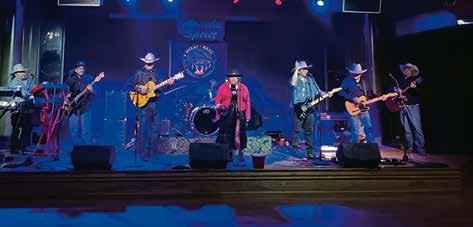

Our firm is accepting new cases in the areas of:
• Estate Planning
is pleased to announce that Grant L. Foutz has joined our firm.
• Probate
• Trust Administration
• Employment Law
• Real Estate
• Family Law
Mr. Foutz will be accepting cases in the areas of Real Estate, Family Law, Criminal Defense, Auto Accidents, and Personal Injury.
• Business Formation
• Criminal Defense
• Auto Accidents
• Personal Injury
Our Firm is also accepting cases in the areas of Estate Planning, Estate/Trust Administration, Employment Law, and Business Formation.
101 W. Aztec Ave., Suite A Gallup, NM 87301
505-722-9121 www.rf-lawfirm.com
101 W. Aztec Ave., Suite A Gallup, NM 87301

505 722-9121 lawfirm.com










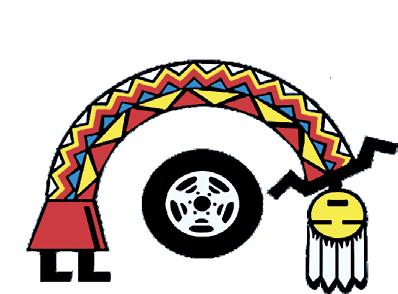

We make it easy to match the right tire to your vehicle.
Since 1978, families and businesses have come to us for tire sales and guidance.
Over the years we’ve expanded our inventory to provide the best tire brands to our customers.
Keep your tires healthy with tire rotation and balancing, or talk with us about brake repair, suspension repair, and wheel alignment services. Call to schedule an appointment today. Financing is available.

By Dr. Val Wangler
August is National Immunization Awareness
Month! With the start of the new school year here and cold and flu season soon to come, it is a great time to review your and your family’s vaccination status and make sure everyone is up to date.
The Journey is partnering with Gallup Community Health to answer health-related questions from our community. To propose a question, please email info@ gallupcommunityhealth.org. While this column provides general answers, everyone is different, so the best way to seek medical advice is to ask your healthcare provider.

In the last six months, the amount of conflicting information about vaccines and changes to the type of information available from previously trusted sources like the CDC’s Advisory Committee on Immunization Practices has made it more challenging to know what is needed. McKinley County, however, has historically maintained a very high vaccination rate, helping to shield us from the effects of the recent measles outbreak, for example. Now, more than ever, it is important to have a trusted primary care provider with whom you can discuss the benefits and risks of vaccines and make the best possible decisions for your health and that of your loved ones.
So what do I need to know? The number one thing to remember is that vaccines save lives. Lots of lives. The World Health Organization estimates that vaccines have saved about 154 million lives globally just since 1974. Few other scientific developments can claim that level of success, with hygiene/ creation of a safe water supply and antibiotics on the list. Vaccines have virtually eliminated several diseases that claimed many, many lives in the past – think polio or smallpox. Nothing in medicine is without risk, and there are uncommon adverse reactions to vaccines, but a very large majority of people who are vaccinated have no serious or long-term effects and develop immunity that protects them from dangerous infections.
For children, much of the standard vaccine schedule is provided by age four, with another important set at age 11. Ensuring children over age two have an annual well child check helps to make sure they stay up to date on vaccines, including annual flu shots. For infants, more frequent well child checks are needed and many of these include vaccinations. By early
childhood, your child will be well-protected from measles, mumps, chicken pox, polio, hepatitis B, and other infections. For adults, immunizations to discuss with your provider include annual flu and COVID shots, pneumonia vaccine, shingles vaccine, tetanus shots and more. Recommended vaccinations depend on your age and medical conditions, so reach out to your provider to see if you are up to date.
The benefits of vaccines go beyond preventing lifethreatening illnesses. Vaccination can also prevent or lessen the effects of common illnesses, meaning less time away from work or school (save those vacation days for something fun!) Vaccines also save money because they are cost-effect to produce and administer and it is much less expensive to get a vaccine than to end up in the ER with a vaccine-preventable illness.
Vaccines don’t just help the person receiving them. One of the most important effects of vaccines is the that when enough of us are vaccinated, the community develops “herd immunity” meaning that a disease like measles cannot take hold and spread through the community. This is key for individuals who have diseases that prevent them from getting vaccinated – these vulnerable community members depend on the rest of us to help protect them. Getting your shots also helps protect infants too young to be vaccinated and elderly or ill family members you are in contact with and is an important way to respect and protect community elders.
In honor of National Immunization Awareness Month, please reach out to your primary care office and make sure your vaccines are up to date! If you need a primary care provider, give us a call at Gallup Community Health, 505-3975172. We’re happy to help! Please let us know what you’d like to hear about next month by sending an email to info@ gallupcommunityhealth.org.

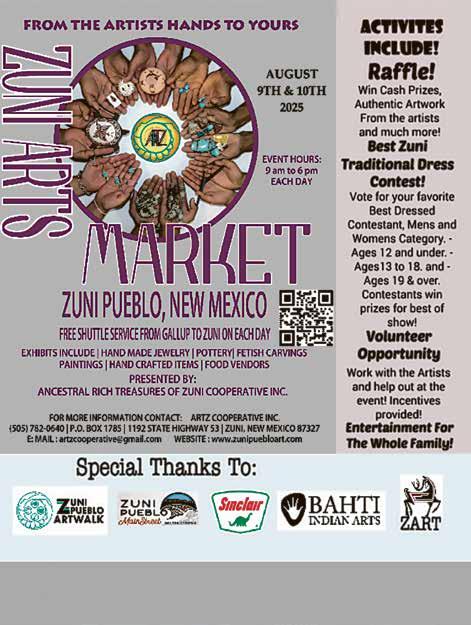

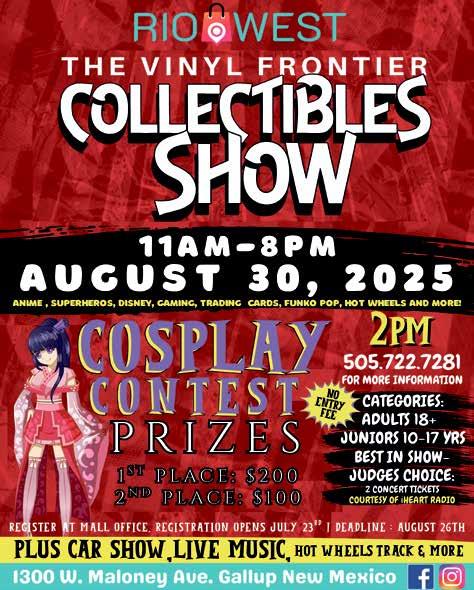
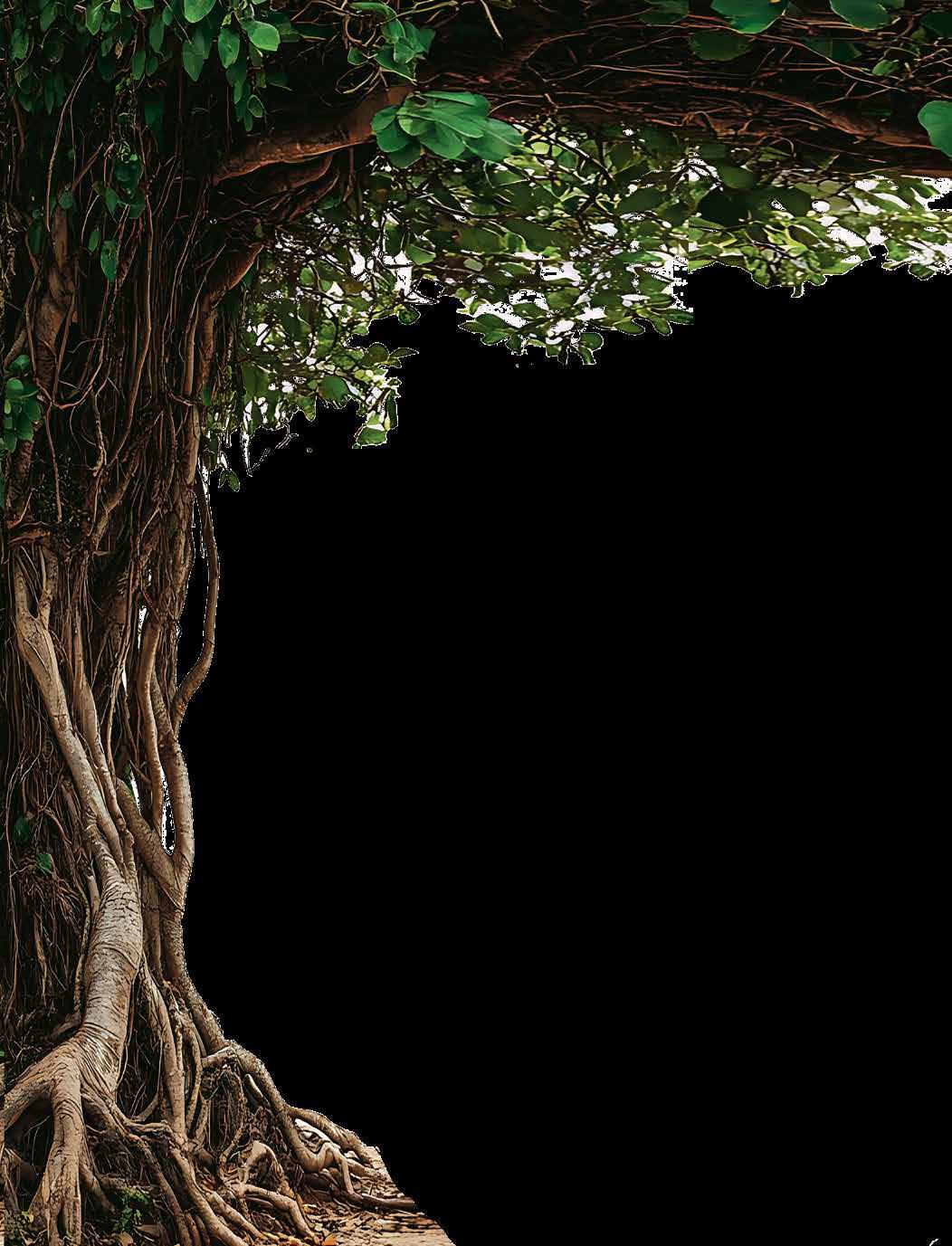
Tree New Mexico (TNM) is a non-profit organization that has been planting trees in the Land of Enchantment for over 30 years in urban areas both large and small.
Last year we were fortunate to participate in the Tree Steward program offered by TNM. The program lasted for 14 weeks during which we learned many surprising facts about trees and how they function.
The definition of a tree is a large woody perennial plant with a single main trunk that has the strength to stand on its own.
TJust like people, trees are made up of cells, tissues and organs. Cells are the basic building blocks. In a tree they organize into structures like wood or bark. Tissues organize into leaves, stems, roots, flowers and fruit. The cells in a tree have walls made of cellulose (makes up the solid framework of a plant). Lignin (a substance that gives plants their sturdy structure and helps them conduct water) is deposited in the cell walls and helps to make the tree woody and rigid so the tree can stand on its own and support its weight as it grows larger.
As a tree grows the cells thicken with cellulose. Each layer forms inside the previous layer gradually blocking water and oxygen from the cell. The living part of the cell dies leaving a hollow structure. More than 95% of a mature tree’s trunk and branches are dead, hollow cells! This is important to know because if a tree is wounded by something mechanical like a string trimmer or a branch is broken by the wind, the tree cannot heal the wound. It can only seal off the wound with new cell growth.
The two main body structures of a tree are the root and shoot systems. The root system anchors the tree and collects water and nutrients. The shoot system develops stems, leaves, flowers and fruit. It also provides nutrition, respiration (through its leaves) and water. Both of these systems interact and a change in one can immediately affect the other. Practices like the topping of a tree result in a loss of the tree’s natural shape and beauty.
The root system of a tree is just as important as the shoot system. Since we can’t see the root system, it often gets little thought or attention. We were surprised to learn that the roots of a tree can extend 2 to 3 times the width of the tree’s canopy if there is available soil space. We also did not know that most of the roots of a tree are in the top 1 to 2 feet of soil.
Roots require oxygen, water and nutrients. Oxygen diffuses from the air into the top portion of the soil. Water comes from irrigation (watering) and any rain that falls. Nutrients come from the soil and water. About 90% of the water and nutrient absorption of a tree happens within a foot of the ground surface! For this reason, Tree New Mexico recommends trees have only natural mulch (wood chips, leaves) on the root area to aid the tree in absorbing water and nutrients. So you can see that
using plastic and rocks on a tree’s root zone hinders the tree’s ability to absorb water and nutrients.
The Shoot System: Trees are different from shrubs because they have one main stem (the trunk) which divides into branches and smaller twigs. Twigs provide support structure for the leaves, flowers and fruit. Branches and twigs spread out to give the leaves as much sun exposure as possible to aid in photosynthesis. Photosynthesis is the food making process of plants where they turn light energy from the sun into chemical energy (carbohydrates). A tree chooses to do four things with the energy it produces from photosynthesis: grow, maintain, protect or reproduce. Depending on the season, the tree’s age, any stress it may be experiencing and other factors, the tree balances these functions.
These are just a few of the many exciting and fascinating things that we learned during our course with Tree New Mexico. To learn more, visit Tree New Mexico’s website at treenm.org
Resources: Module 3, Tree Steward Manual
Darlene Cherney, Margie Dressler and Donna Eoff are Cibola-McKinley Master Gardeners and graduates of the Tree Steward Program offered by TreeNM. If you have questions, please call the NMSU Cibola County Extension at 505-287-9266 or NMSU McKinley County Extension at 505-8633432 or TreeNM at 505-265-4554





By Gabrielle Myers
Erin Bulow is a local artisan who you may have seen selling his custom stickers in the Arts Crawl Walkway. Erin was born in Zuni, New Mexico and grew up in Gallup, New Mexico. Erin maintains involvement with the community through his art, and he has received multiple ribbons for his artwork. “My primary medium at the moment is watercolor, but I work with everything from acrylic, gouache... I haven’t used

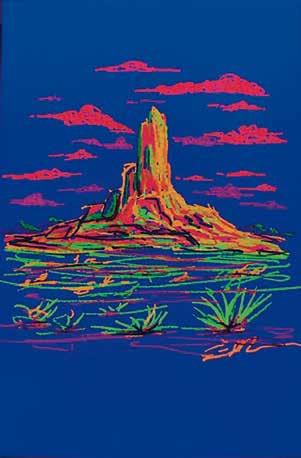
oil. I’ve been told it takes longer to dry, and I don’t have the patience to wait for it to dry,” Erin shared laughingly. “My dad, Ernie Bulow, was an author and one of the first writers with the Gallup Journey. He wrote West by Southwest. Growing up with him as a well-known figure in the community, I was exposed to local art early on especially during the first years of Gallup’s Arts Crawl, when gallery owners opened up their spaces each month. I’ve always liked being part of the art scene here.”
When it comes to art, Erin is not one to stay in a single lane. He dabbles in graphic design, pottery, jewelry making, sculpting, carving... you name it! “Anything creative I want to try,” Erin exclaimed. From 2009 to 2017, he ran a vlog channel, Erin & Family Vlogs, on YouTube, which got him into video editing, photography, and writing. “I even wrote a few stories for the Gallup Journey back in the day. I submitted some poems and opinion poll pieces. My mom’s favorite opinion poll I did was when I was in high school. I interviewed one of the worms we were dissecting in biology. I answered the questions as if I were the worm. People liked it and I started doing something quirky every other month back then.”
Among Erin’s collection of art pieces, his most memorable piece is a watercolor painting he made in 2019. “I liked it because for me it represents a moment in my life where I was a little low. Things were piling up and life was overwhelming... One night, I was on the verge of losing it and then I started listening to music to channel my creativity. That night I made the water coloring, and it looked amazing! I loved how it looked. It made me happy. I love creating because even at your darkest point you can still find the beauty. I will always like that piece because it’s a
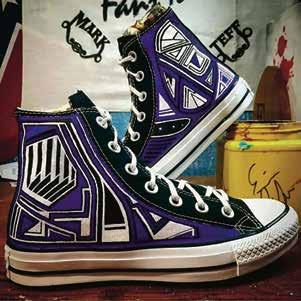
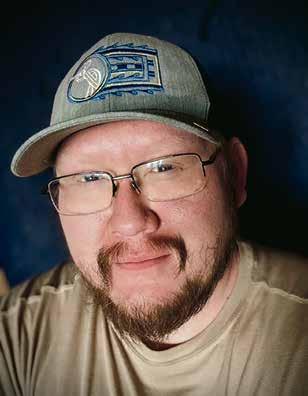
reminder of how far I’ve come even if I was down that low, I can still create something.” Erin’s attention to detail invites people to really see and feel each piece. “I put good energy into everything I make because it makes me happy,” Erin shared. “I always say, ‘whatever piece someone buys or finds, or if the piece finds them, they share the same energy. They kind of become partners’. I actually wanted to keep my favorite piece, but I ended up selling it.” After selling his favorite piece, Erin confessed he used to think about where the person who bought it might have hung it in their home. Fortunately, the owner of the painting hung Erin’s piece in Gallup’s very own

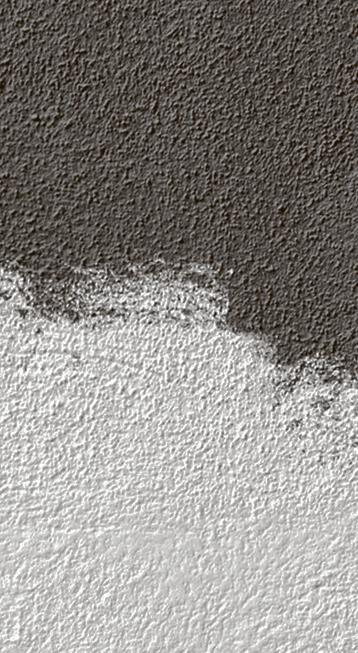

Fratelli's Bistro. “Every time I go there, it’s a reminder that my work’s being supported and I get to see it when I eat there.”
When asked what inspires his art, Erin had no shortage of stories to share. “I’ve been making art for a long time”, Erin shared nostalgically, “I started out selling downtown during the nightly dances at the old train station. I sat with my mom while she sold her jewelry. I was probably around six when I first sat with her, and by the time I was eight, I started making things myself. When I was ten, I entered the Gallup Inter-Tribal Ceremonial for the first time, that was my first official entry.
My parents, Ernie Bulow and Michelle Peina, ran Buffalo Medicine Books, a small publishing company. Because of that, we did a lot of traveling around the Southwest for conferences. On those trips, I’d bring books, coloring books, or drawing pads with me. My uncle, Franklin, would always hand me a drawing pad before a trip and say, ‘make something to show me when you get back.” Same with Tony Hillerman, he and his wife Maria used to gift me art supplies every Christmas. I’ve always been encouraged to be creative. My parents were also involved in the Indian Art trades. He did trades and shows like the Whitehawk Antique Indian & Ethnographic Art Show. At the art shows on opening night, before the market started, all the galleries would have their artwork on display. I would walk through the galleries, pick up the art books, and talk with the artists. I soaked in all the styles I liked, and I took in whatever advice I could from them. I was also lucky to be around artists like Tony Abeyta while growing up. On the way home, I would flip through the art books.” All of that early exposure stuck with him, and it didn’t take long for the inspiration to turn into action.
Erin’s passion of creating and showcasing his art goes back to his teens. “My first show was at Crash and Thunder Gallery when I was 16. It was my first solo feature, and it meant a lot,” Erin recalled. “Back when they first put the art box out in the front of 305 Fire Pizza, I was still at Miyamura High School, and our class got to contribute to it. I also did two student art shows here when I was younger.” These days, Erin showcases his art throughout the town. “Fratelli’s and Rocky Mountain Cannabis Dispensary give me a platform to push my stuff, and so does Art123. Crash and Thunder has always been there, and KESHi the Zuni connection in Santa Fe really like carrying my work. Zuni Turquoise Village and the Zuni Co-Op have been huge supporters too.” When it comes to

local artists, Erin has been involved with community projects like the Gallup Beautification Project and has worked alongside other artisans like Ric Sarracino and Jerry Brown.
As for dream collaborations? “I always wished I had gotten into art a little earlier, so I could’ve worked with Irving Toddy, Bahe Whitethorne, and Ernest Franklin who was a family friend. My uncle, Chris Nastactio, was a great artist in a sense where he could just start drawing on a napkin and make a sculpture from foil. I always took that concept from him because it doesn’t matter where you are or what you have, you can always create something from nothing. I hope they’re happy and proud of where I’ve gone with it,” Erin expressed, “One of my biggest mentors while in high school was Tine Hayes, my art teacher at Miyamura.” All his support stayed with him, and it helped him find a creative rhythm that works for him, even if it sometimes starts in the middle of the night.
“I used to stay up late and create in the middle of the night, just listening to music,” Erin explained. “Back then, I’d just pick up a brush and go.” These days, his process is a little more intentional but still rooted in feeling. “I usually put on music I’m vibing with or play a comfort show in the background that puts me in a good spot. Bob’s Burgers, The Ranch, The Birdcage... stuff that makes me happy. And I always have to clean my space before I start.” Erin revealed he avoids over-planning his pieces. “If I start overthinking, it messes me up. I’ve learned to stop when that happens because that’s the piece telling me it’s done.” Erin credits that advice to Irving Toddy, who once told him, “If you start overthinking it, step back and look at it. From that point, you’ll see it’s done.”
Over the years, Erin’s built an impressive body of work. In high school, his watercolor won Best of Show and 1st Place in the Southwest Indian Foundation (SWIF) Student Art Show. At 17, he painted a shoe as a donation piece for the 2011 Japan Tsunami Relief and earned Second Place. As an
adult, he recently took home a 2nd Place ribbon at the Ceremonial for another watercolor piece. Erin has also shown his work at the Eldorado Hotel and Spa in Santa Fe and regularly exhibits at Art123 and during Gallup’s monthly Arts Crawl. “I’ve set up at every Arts Crawl. I’ve never missed one, and if I ever do, come look for me!” Erin joked. He also creates layered vinyl stickers, hand-painted shoes, purses, and hats, and designed the official poster for the New Mexico Outdoor Economics Conference.
Up next for Erin is a major public art project, a nine-piece sculpture installation for the Route 66 Centennial “Freedom Flight” project. “Each piece is based on my sticker designs,” Erin explained, “the designs will be made into 6x4-foot metal cutouts, and they will be installed outside the Gallup Cultural Center.
And he’s not slowing down anytime soon! Erin plans to enter a new piece in the 2025 Inter-Tribal Ceremonial this August 1st. To follow his journey or get in touch, you can reach him at 9568erin@gmail. com or find him on Instagram at @The_Amazing_ Albino.
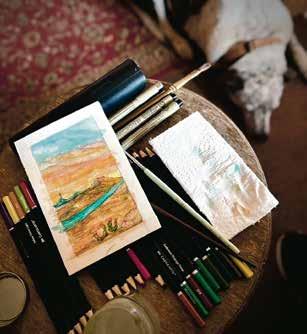


Saturday, August 9
Show Opening: “The August Show: History in the Making” 7pm - 9pm, ART123 Gallery
A group show featuring photography, painting, drawing, sculpture, mosaic, jewelry, and mixed media work by 22 local artists.
Sunday, August 17
Plein Air Painting Workshop: Hog Backs
9am - 12pm
Join instructor Dana Aldis for
an outdoor painting excursion. Learn the basics of the “plein air’ technique and aim to complete a landscape in three hours! $15/person, some materials included.Advanced registration required: galluparts.square.site
Tuesday, August 19
Artist Talk
6pm, ART123 Gallery
Hear from “The August Show” artists about their vision of local art.
Wednesday, August 27
Paint & Sip: Roadrunner and Ristras w/ Chili Lime Mango Mocktail
6pm - 9pm, ART123 Gallery
$40/person. Advanced registration required: www. galluparts.org/paint-sip
Saturday, August 30
Public New Deal Art Tour
1:30pm - 2:30pm
I want a copy of God's message of strenth, hope and love. (Psalms and Proverbs). I understand there is no charge. IT IS FREE!
Allow A Few Weeks For Delivery
Mail to: PO BOX 2025 Gallup, NM 87305
Meet in front of the historic McKinley County Courthouse. Visit the historic courthouse and public library with an expert guide to see paintings, murals, furniture, and other highlights from Gallup’s collection of 1930/40s New Deal art. This event is free and open to the public. Questions: info@ gallupnewdealart.org or 720-2184712.
Friday, August 1
Friday Night Rides – Cars & Coffee
6pm - 9pm, Camille’s Café
306 S. 2nd St.
Live music from the sensational Apache Spirit – helping kick off the 103rd GITIC
Axe Throwing Contest! Giving away prizes all evening!
August 1-10
103rd Gallup Inter-Tribal Indian Ceremonial (see inside back cover for full schedule & locations)
June 7 to August 9
Levitt AMP Gallup Music Series
Performances at the McKinley Count Courthouse Plaza and the El Morro Theatre Saturdays at 7 pm from June 7th to August 9th. Experience the power of free, live music to bring our community together. Bandits on the Run, on August 2: This show will be at the historic El Morro Theatre in downtown Gallup. Travis Thompson, on August 9
Wednesday, August 6
The Grand Opening of the Edward S. Curtis Room 1pm - 4pm, at the Gallup Cultural Center
The Edward Curtis Family and board members of the Curtis Legacy Foundation will be on hand to present the release of the “UNPUBLISHED SOUTHWEST” book of unseen Edward S. Curtis photographs. The foundation will be raffling an original Curtis Photogravure (valued at $2000.00). All visitors that day are qualified to win! Come check us out!
Friday, August 8
Manuelito Hall 4th Annual Reunion
7 am-4 pm, Veterans Helping Veterans Center, Ford Canyon, 908 East Bueno Vista Dr. “A day in the sun filled with fun and laughter, and some great food.” Potluck style, Bring Your Favorite Dish! Info: (928) 5510001 or (505) 567-0772
Bi-County Fair Open Building
Online entries open August 13-28
Check in: Thursday, August 28 3pm-6pm
Friday, August 29, 10am-4pm
Exhibits open:
Saturday, August 30, 10am
Exhibits for Open Building
Released: Sunday, August 31
Showcase your works of art, baking, garden vegetables, flower arranging, quilting, etc at Bi-County Fair! There will not be Monday pick-up! For more information: https://bi-countyfair. com/ “
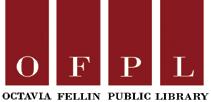
August Events at the Octavia Fellin Public Library, Gallup Museum & El Morro Theatre
Color Our World! Summer Reading Program
Get ready to Color Our World this summer with the library's Summer Reading Program! From June 2 to August 2, readers of all ages can log their reading and activities to earn fantastic prizes and enjoy a vibrant lineup of programs and events celebrating artistic expression. Don't miss out on the fun—register online at ofpl. online or in person at the library today!
#NMSummerReading, #ReadNM, #ColorOurWorld, #ColorGallup
Call (505) 863-1291 for more information.
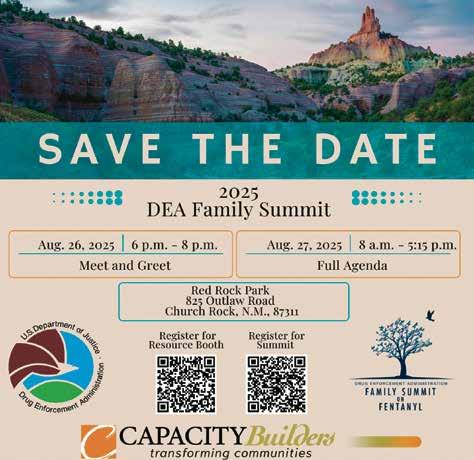
Library Closure Notice
August 1st and 2nd for End-of-Summer Reading Party
All library locations will be closed. Visit ofpl.online for ebooks, streaming media, and virtual programs. Call (505) 8631291 for more information
End-of-Summer Reading Party! @ Fox Run Golf Course 1109 Susan Ave. Wrap up a fantastic summer of reading with a fun day for the whole family! Join us for OFPL’s End-ofSummer Reading Party, featuring face painting, tasty food, exciting games, and a thrilling inflatable water slide to cool off in style. Put your brainpower to the test during a lively family trivia challenge hosted by local favorites Erika and Matt—fun and laughter guaranteed! Plus, if you submitted your reading log, you’ll be entered into our grand prize drawing filled with fantastic giveaways. Let’s celebrate a season of stories, learning, and community—see you there! Call (505) 863-1291 for more information.
MakerSpace at ArtsCrawl
August 2nd, 7:00 PM – 9:00PM, El Morro Event Center, 210 South 2nd St. Join OFPL’s MakerSpace
at ArtsCrawl! Discover your inner maker with OFPL’s MakerSpace at this month’s ArtsCrawl! Stop by to explore creative crafting using our high-tech equipment. This month, we are exploring sublimation printing. Learn the full process—from design to heat pressing—and create your oneof-a-kind tote bag to take home. Whether you're a seasoned maker or brand new to crafting, this is the perfect opportunity to get inspired and make something amazing. All materials are provided. Don’t miss out! #OFPLatArtsCrawl
#OFPLCreates. Call (505) 8631291 for more information.
OFPL PlaySpace at ArtsCrawl
August 2nd, 7:00 PM – 9:00 PM, Outside El Morro Event Center, 210 South 2nd St. Join OFPL’s PlaySpace at ArtsCrawl for family fun and get creative! Build with our Big Blue Blocks and Dino Bones, made to inspire children to design new environments. Enjoy classic games like chess, checkers, dominoes, cornhole, and ring toss, or try something different like badminton and shuffleboard! Draw with chalk and make giant bubbles. #OFPLatArtsCrawl
#OFPLCreates. Call (505) 8631291 for more information.


Veteran owned and operated, Ted’s Pawn and Jewelry has been serving customers in the Gallup area since the 1960s.
The business has over 10,000 square feet of Native American arts, pawn space, firearms, jewelry, tools and more.
412 W. Maloney Avenue Gallup, New Mexico 505-863-5902
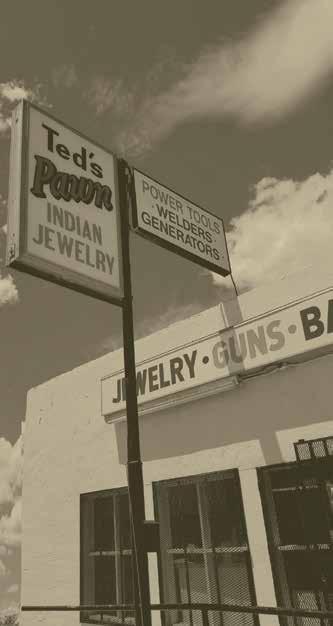







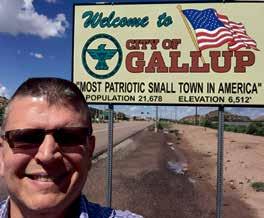
By Kenneth Riege USAF Veteran
This story was originally published in the August 2022 Journey, and as I was rereading it, I wanted to share this again to remind everyone how important it is to visit our veterans’ cemeteries and to pay your respect for those who have paved the way for our freedoms. Of course, not all veterans are laid to rest in a veteran’s cemetery, and we need to always remember to pay your respects to those heroes too.
I remember our first time visiting the Santa Fe National Cemetery; how awe struck we were by the powerful image of the rows upon rows of white headstones. It is an honor to walk amongst the heroes that have been laid to rest there.
The first known burial in the cemetery occurred in 1868 which was prior to the formal establishment of the land as a national cemetery.
There are many notable persons laid to rest there to include 10 Medal of Honor Recipients. On one of our visits there we made it a point to place an American Flag at each of their headstones. Also laid to rest there are several Navajo Code Talkers to include Chester Nez who was the last surviving member of the Original 29. Each time we visit Santa Fe, we always make it a point to visit the Cemetery and to pay our respects to those who served and fought for this great country. We will always visit the final resting place of Captain Jerry Murphy, who received the Medal of Honor on 27 Oct 1953 for his actions during the Korean War. That date
may sound familiar to many since it is the same date that Hershey received his medal. Hershey and Murphy were best of friends and made many trips together. On one of our visits, I left a Hershey MOH Challenge coin on Murphy’s headstone and for many years after that first visit the coin was still there.

Headstone and final resting place of US Marine Captain Raymond G. Murphy who also received the Medal of Honor for his actions during the Korean War. The VA Hospital in Albuquerque is named in honor of Captain Murphy.
It was on this first visit that we came across the final resting place of MOH Recipient Daniel Fernandez. Daniel was only 21 years old when on 18 Feb 1966 he made the ultimate sacrifice for his country and his fellow soldiers by throwing himself on a live grenade. It is a great honor to visit his grave site, and I always render a salute

and thank him for his courage that day. While there are many memorials throughout the cemetery, there is only one statue and that is of Pvt. Dennis O’Leary. There is very little known of Pvt. O’Leary other than he was a Pvt. Stationed at Ft. Wingate and was not a happy soldier. The story most often shared is that he went AWOL (Absent Without Leave) and several weeks later returned to his post without an explanation of his absence. He was court-martialed and sentenced to stay in the guardhouse, which he did so without complaint.
However, on 1 April 1901, Pvt. O’Leary took his own life. He left a note saying he had left a “memento” in the mountains with specific directions and to take a team of horses and wagon to get it. It is reported that the soldiers found a large, life size soldier carved out of sandstone. The soldier was wearing boots, and a cartridge belt, reclining against a tree. Behind the truck was the inscription: “Dennis O’Leary, Pvt. Co I, 23 Infantry, died 1 April 1901, at the age of 23 years and 9 months.
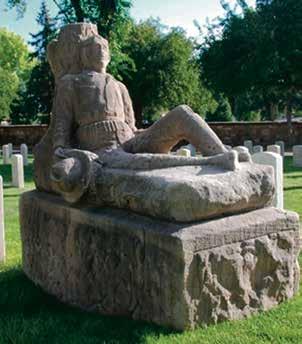
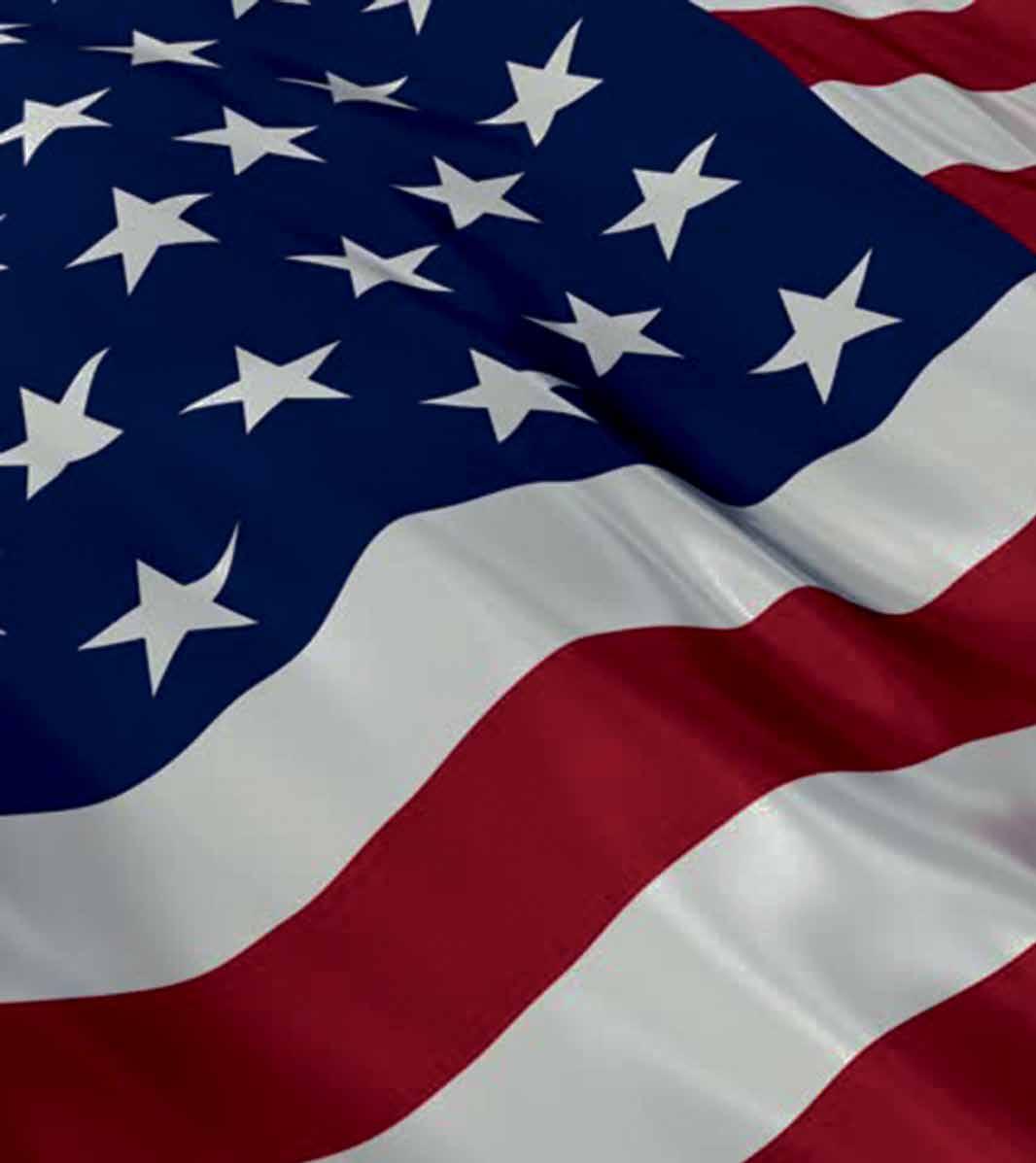
The Santa Fe National Cemetery encompasses ninety acres and has nearly 68,000 interments. It is administered by the United States Department of Veterans Affairs and is one of two national



cemeteries in New Mexico. The other being Fort Bayard near Silver City.
When we visit the cemetery my family and I have one standing rule and that’s to park at the main office and walk the grounds. We do so to honor those who

have been laid to rest there. We walk for them.
There are many beautiful statues and memorials throughout Santa Fe and one that we always make sure to visit is of MOH Recipient and retired US Army Master Sgt. Leroy Petry. This statue is just off the plaza and a must see when you are in Santa Fe. Just ask the locals they will point you in the right direction.
I will close this month’s Medal of Honor Quote from Master Sgt. Leroy Petry. His quote is:
“Do something today to better others and yourself.”
Thank you, Leroy, for those words of wisdom and for your service and dedication to our great country and as Leroy would say, “Rangers Lead the Way.”

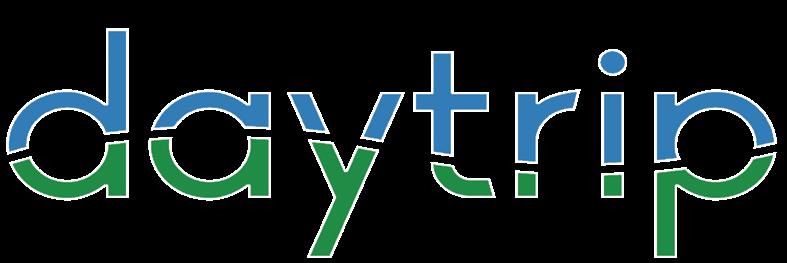
By Bob Rosebrough
While chatting with a longtime climbing buddy Ernie Stromeyer during a day trip to Aztec Ruins, I mentioned a large rock formation between Gallup and Farmington that has caught my attention. The last three or four times I’ve driven north on Highway 5 to Farmington my attention was drawn to the regal formation rising above the otherwise barren, tortured landscape.
I asked Ernie if he had seen “the striking butte” a few miles north of Highway 5. “It keeps grabbing my attention every time I drive to Farmington,” I say. “It looks unclimbable, but I would like to hike to the base sometime and check it out. Have you seen it?”
“Yes, it’s out in the badlands,” he responds. “There are ruins on the top. It’s called the Pillar. A long time ago, I climbed it with an old climber who said it was a Chacoan outlier. It’s been so long ago that I don’t remember much about it. Do you want to check it out?”
Six days later, Ernie drives his truck 45 miles south of Farmington,
and I drive 75 miles north of Gallup in my jeep. He spots a promising sandy two track road that looks like it would get us part way to the formation. He parks his truck just off the shoulder of Hwy 5 and climbs in my jeep.
Once we get a glimpse of the Pillar from the paved road, we head north about a mile north on the two-track road before turning into a wash and heading east for a half mile of so. From there we hike about two miles toward the Pillar, which is flat topped mesa with sheer walls. Everything on the south, west or north walls of the formation seems unclimbable. Ernie tells me that he thinks the route to the summit is on the eastern side of the formation, which is out of view as we approach.
Once we start up the steep east side every step we take seems unstable, and the route to the summit uncertain. I regret not taking my walking stick for balance. About three fourths of the way up the east side, the route requires climbing up a steep 12-foot alcove.
“I don’t remember the route being this difficult,” he says as he
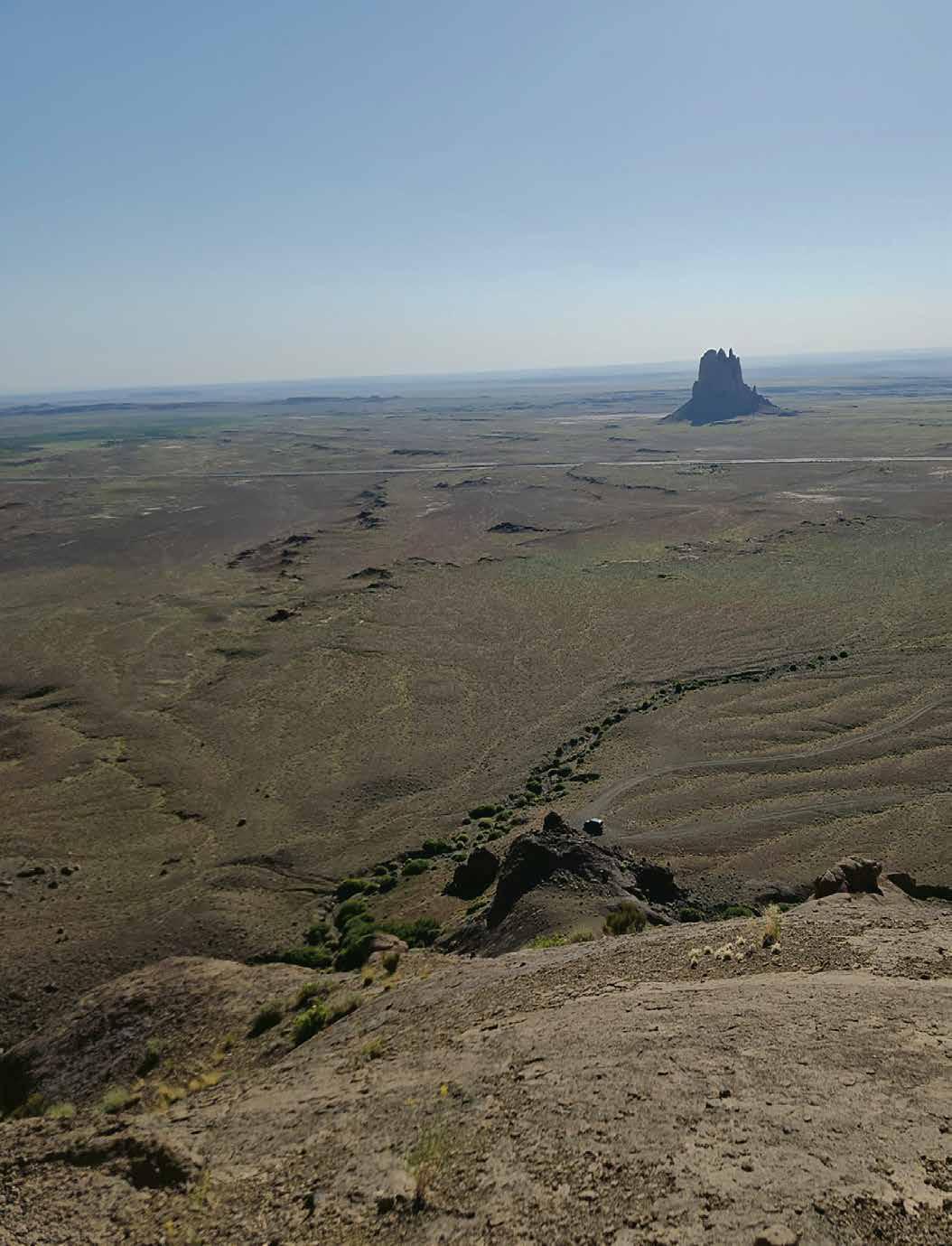
makes the last move up and out of the alcove, and we scramble to a spectacular flat summit that seems surreal. It feels like we can see forever in every direction. The snowcapped La Plata Mountains to the north, Shiprock to the north, and the Chuskas to the west all stand out. Several locations on the summit feature rock slabs that seem designed to provide limited shelter and refuge from ancient enemies.
After we reverse our route and get back to our vehicles, I post our route on Strava and promptly receive a comment from a young archaeologist, Gallup, who tells me that the Pillar is not a Chaco outlier. He tells me that it was an ancient Navajo site, and I think he is right. The rock work on the summit hideaways of the Pillar is bulkier than the intricate rock work at Chaco. The Pillar seems to be a long abandoned Navajo outlook on the edge of Dinetah, that at one point long ago, was used to ward off Navajo enemies.
If you want to check out the Pillar, I recommend that you seek an Outdoor permit from the Navajo Nation in Window Rock before heading out.

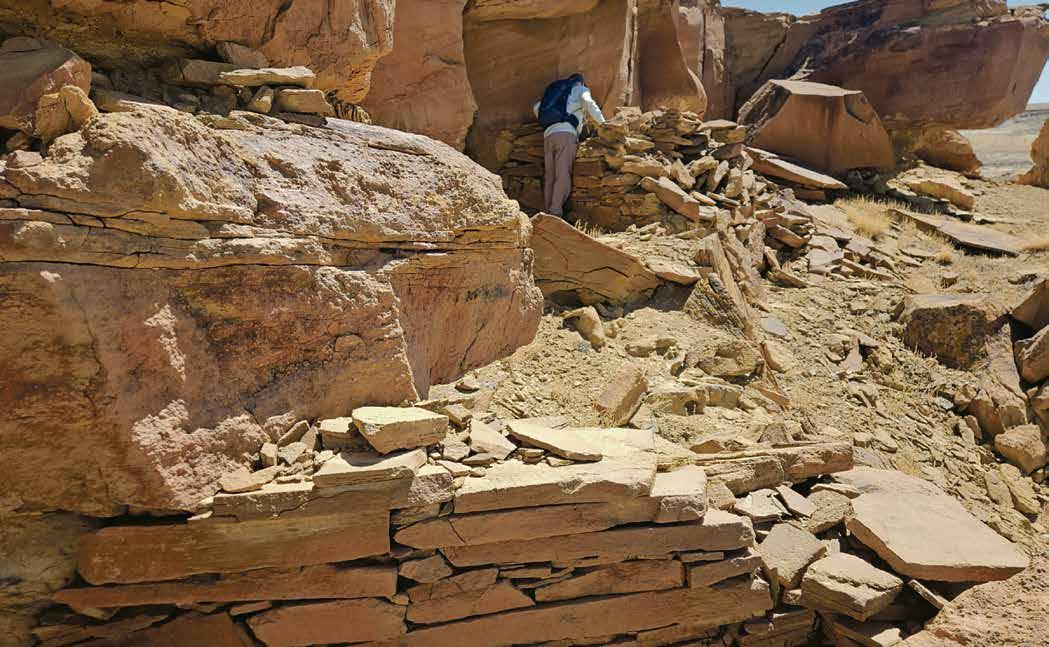
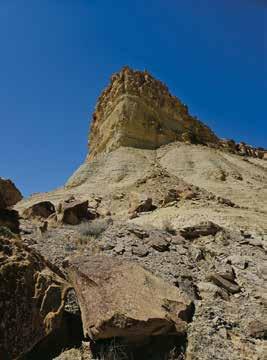

Special Olympics New Mexico-Gallup and Area 6 would like to thank our community of Gallup businesses and friends for their generous 2024 donations!
Adam Trubow (100 Friends for 100 Miles)
Liz and Gil Silva (Jeremiah’s Place)
Amigo Automotive
D. Baca Jr. LLC
Gallup Lions Club
Butler’s Office Equipment & Supply
Peter & Janet Tempest
Porter Dental Gallup Journey, Inc.
Kiwanis Club of Gallup DAB, Inc. (Lebeck Family)
Castle Furniture
Family Medicine Associates
Adobe Storage
Baskin-Robbins
Jo Ann Benenati Mason & Isaacson, P.A.
Gallup Welders Supply/ Hollywood Orthodontics
Four Corners Welding
Eileen Biunno
Dr. and Mrs. Randolph Copeland
Genaro’s Restaurant
Genaro Estrada
Clifton Electric Company
Combined Investments, Inc. (RE/MAX)
Tony D. Gonzales, CPA, PA
Gallup Lumber & Supply Perry Null Trading Company
John Peña
Dr. Robert D’Orazio
Troy’s Auto Sales Perry Null Trading Company
Grandpa’s Grill
Francis and Delphine Pawlowski
City Electric Shoe Shop
Thanks also to Gallup and Area 6 Director, Janie Lee Hall, for her commitment to our athletes! Contact Janie Lee Hall for information and volunteer opportunities – 505-870-8707.
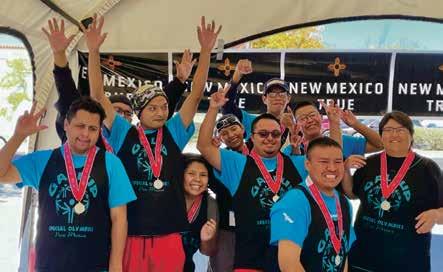
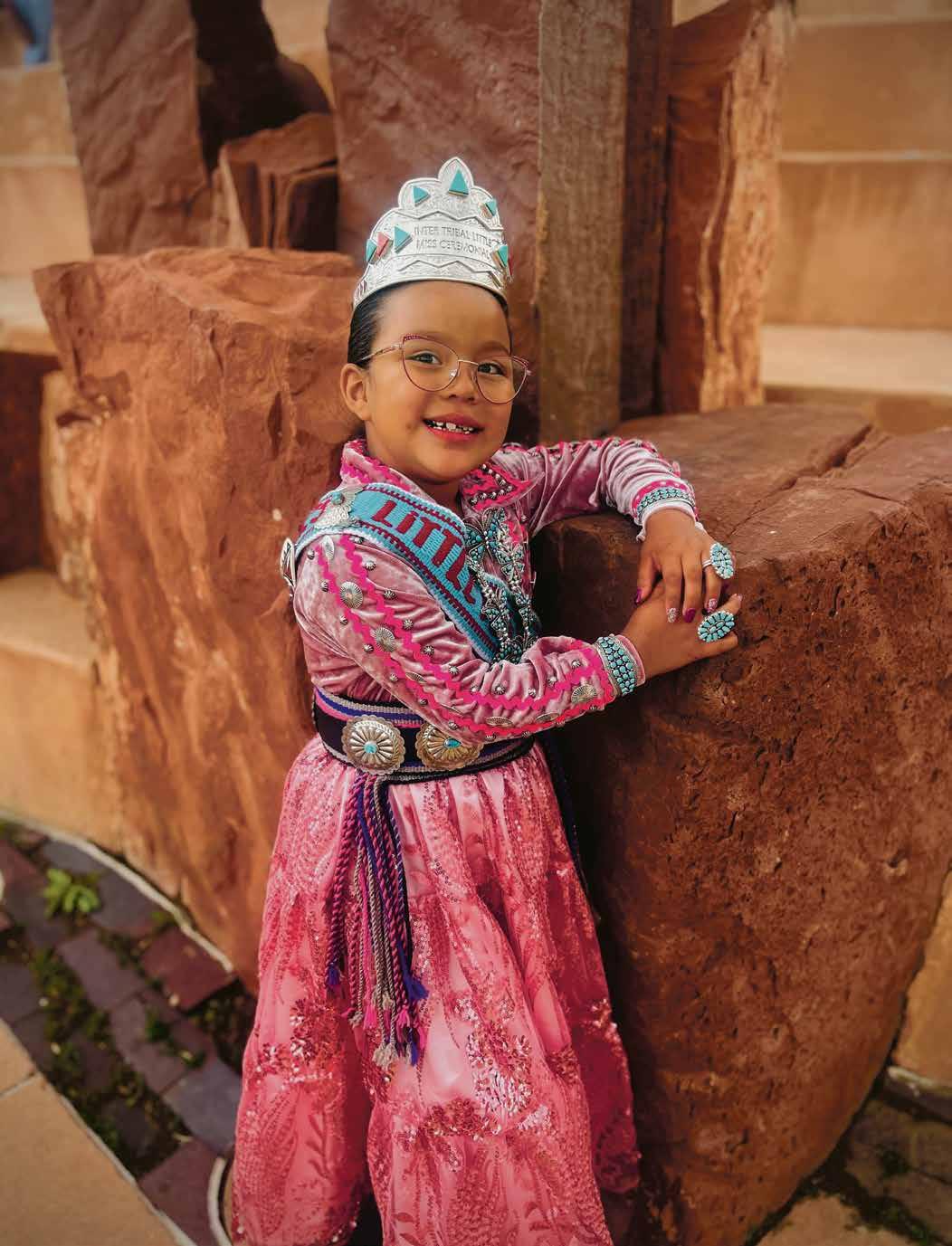
Yá’át’ééh My name is Makayla Jones, and I am your outgoing Gallup InterTribal Little Miss Ceremonial 2024 - 2025 I would like to give everyone a great big Thank You for Supporting me and encouraging me throughout my reign. I have been from East Coast to West Coast, but my heart is always in Gallup New Mexico. I look forward to my new adventures ahead. I hope to see you all again very soon. And to the new incoming Little Miss Ceremonial, Just Smile and Wave, and enjoy all the title has to offer. You’re gonna have fun!
We’ll see you all later. Ahé’héé



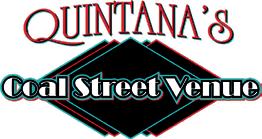

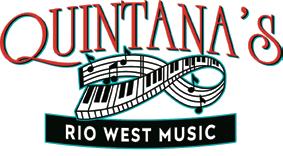
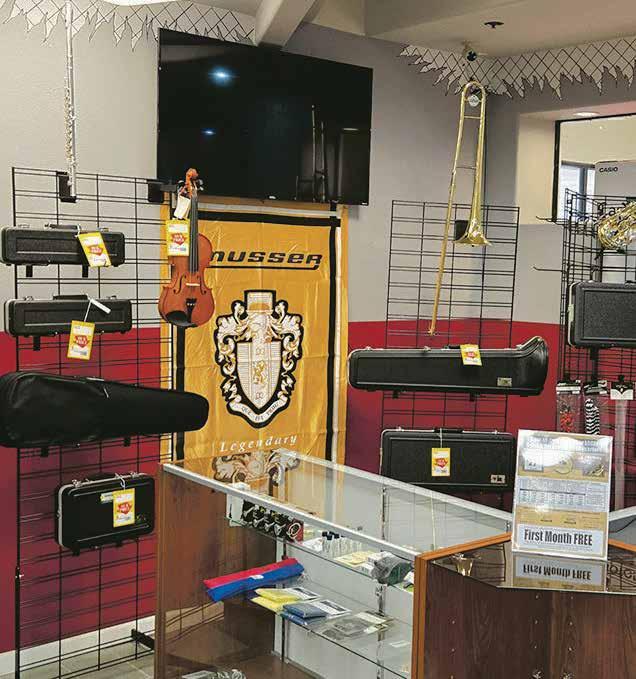

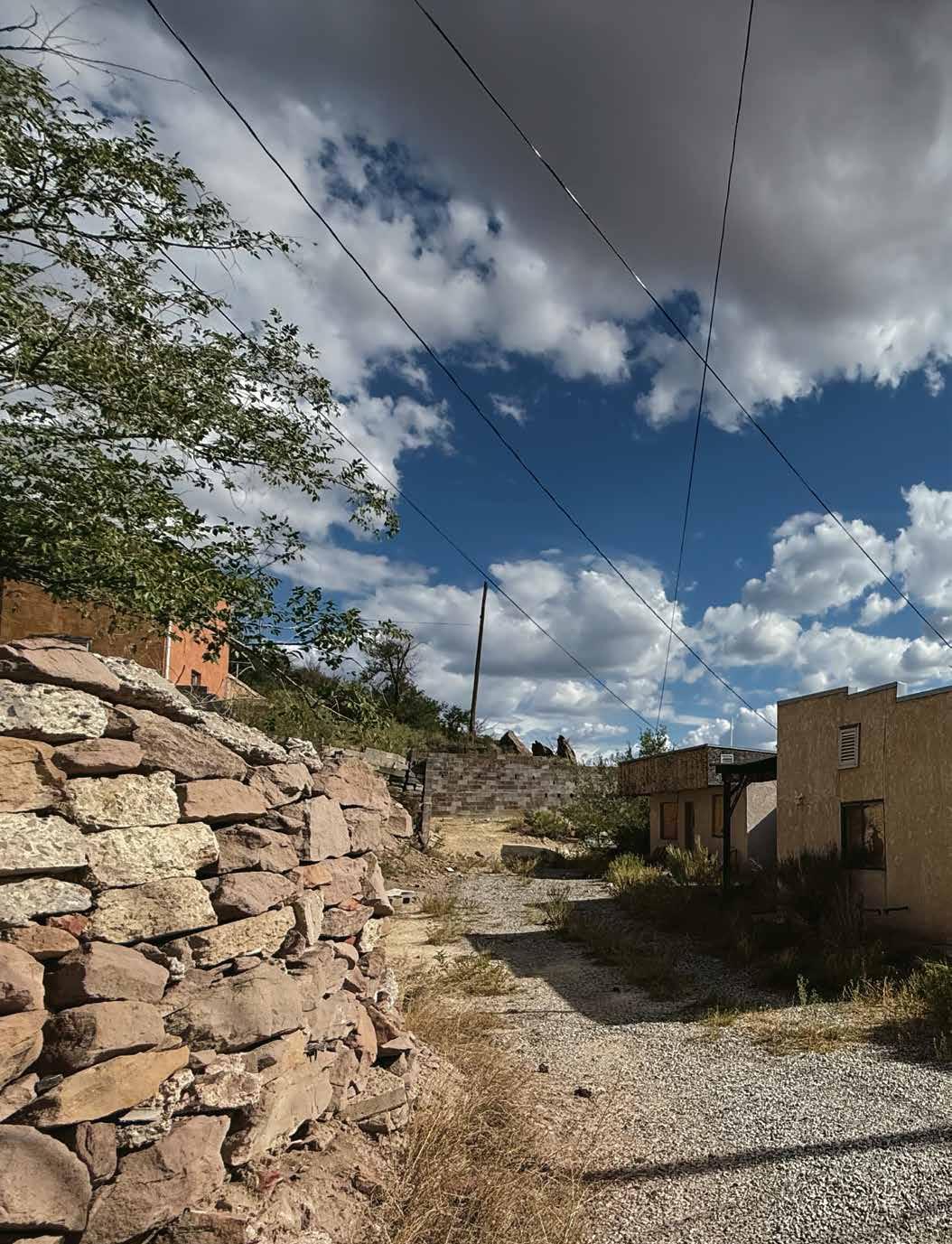

It’s still vivid in my memory—visiting my great-grandpa as a child, bedridden in his dark house on the Perky. I didn’t really know him, but somehow, I understood that alcoholism had taken him down. As an adult, I learned that he began drinking after losing two babies to diphtheria. Years later, I found out that the kind caregiver we used to see during those visits had become unhoused—another life deeply affected by alcohol use disorder. That memory stayed with me, even though I never imagined I’d end up in a field where those early impressions would resurface so clearly.
In my twenties, I began learning more about one of my favorite great-uncles—someone who affectionately called me “Smiley” and always seemed to have a big bottle of Dr. Pepper tucked into his jacket. He had stopped drinking before I was born, so the man I knew was gentle and funny. But over time, I learned that before sobriety, he had been an abusive husband and father. His son later died from complications related to alcohol use disorder. At a family gathering, I overheard cousins share how terrified they used to be of him. It was hard to reconcile their memories with the person I had loved so deeply.
I’m incredibly grateful for the opportunity to witness the beauty of human resilience, the complexity of our minds, and the power of healing. My great-uncle wasn’t perfect, even in sobriety—because sobriety is just one piece of a much larger puzzle.
That’s why I believe so strongly in a whole-person approach. My sister, a chiropractor, often says she has to adjust the entire body—not just one part—because everything is connected. That philosophy applies just as much to addiction and behavioral health: healing has to reach every part of a person—physical, emotional, spiritual, and relational. Like Maslow’s Hierarchy of Needs, the puzzle pieces must be placed together to move from surviving to
thriving.
When I began working in this field, it wasn’t a career I had planned. I followed a path that led me where I was needed—where I could learn, contribute, and grow. What I didn’t expect was how much this work would give back to me: a deeper understanding of my own family, and of the many others walking similar roads.
It’s also taught me how much we need harm reduction. Harm reduction is compassion in action. Not everyone we serve is ready for recovery, and that’s okay. For some, the goal might be safer use, stabilization, or simply staying alive another day. Harm reduction strategies—like access to naloxone, clean syringes, or wound care—are sometimes misunderstood as enabling. But in truth, they are tools rooted in dignity. They meet people where they are, and they say: “Your life matters.” Whether someone continues to use or not, they deserve the same level of respect and care as anyone else.
I’ve seen moments where this approach saved lives—and even opened the door to eventual treatment. Sometimes, a person comes in just to charge their phone or get a warm meal, and weeks later they’re asking about residential treatment. Harm reduction doesn’t mean giving up on recovery; it means recognizing that recovery looks different for everyone, and every step toward wellness is valid.
Now, as the Residential Director for a local organization offering a range of voluntary services—including medically monitored and social withdrawal management (some may know it as “detox”), as well as a 30day residential program—I have the privilege of walking alongside people at some of the most vulnerable points in their lives. In our program, some clients receive medication to support safe withdrawal; others don’t, depending on their needs and goals.
Every day, I witness the incredible complexity of the human experience—and the strength that often lies just beneath the surface. This work has shown me the transformative power of healing—not just physically, but in relationships, in self-un-

What remains of the house that my great grandpa built by the Perky and where I enjoyed climbing rocks and picking up sticks.jpg
derstanding, and in how people reconnect with the world around them.
Three Things I’ve Learned:
1. There’s No One-Size-Fits-All Approach to Treatment Recovery should be personcentered, holistic, and responsive to each individual’s journey. Many of the individuals we serve are navigating co-occurring mental health and substance use disorders, which must be addressed together to support long-term healing. Tailoring care to the whole person— mind, body, and environment—is essential for meaningful outcomes.
2. Addiction Is a Medical Disorder— Not a Moral Failing “A common misperception is that addiction is a choice or a moral problem, and all you have to do is stop. But nothing could be further from the truth,” says Dr. George Koob, director of the NIH’s National Institute on Alcohol Abuse and Alcoholism. “The brain actually changes with addiction, and it takes a good deal of work to get it back to its normal state. The more drugs or alcohol you’ve taken, the more disruptive it is to the brain.” Addiction is a chronic brain disease—and recovery is not about willpower, it’s about support, treatment, and compassion.
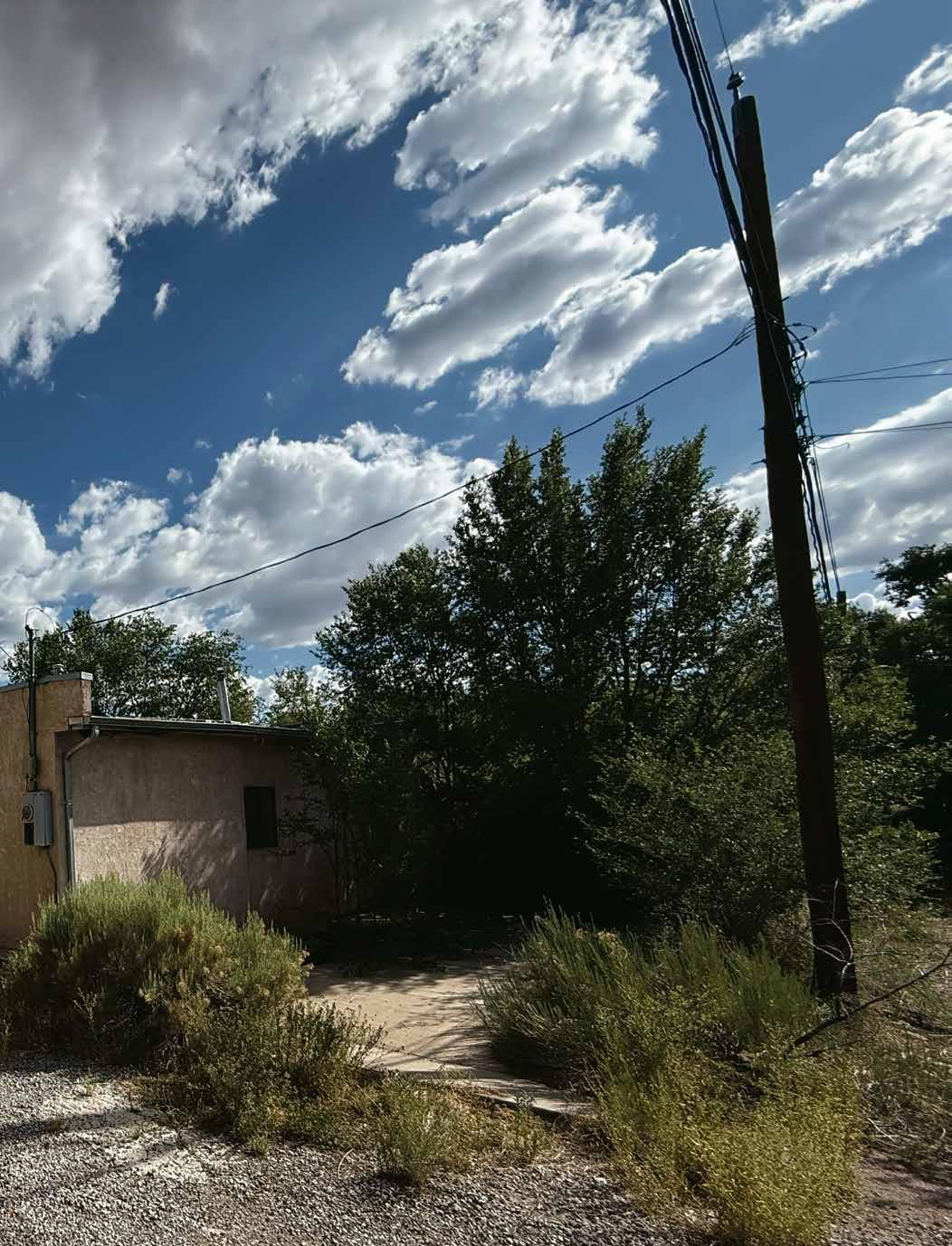
A wise and compassionate retired nurse once told me how she began her trainings—by asking participants what they had wanted to be as kids. The answers were things like ballerina, singer, firefighter. Then she’d gently say, “No one dreams of growing up to be addicted to alcohol or drugs, or to be living on the streets.”
3. Addiction Can Affect Anyone
Substance use disorders don’t discriminate. While it may be more visible in people without the resources to hide it, addiction affects individuals across every background, race, profession, and socioeconomic level. We must avoid stereotypes and remember: it’s not about who struggles—it’s about how we respond—with empathy, access, and care.
And we must extend that compassion not only to those in recovery, but to those who are not there yet. The person still struggling, still using, still unsure if change is possible—they are just as worthy of kindness, dignity, and hope. Sometimes, compassion is the first step in someone’s path to healing. And sometimes, it’s the only thing we can offer in the moment—but it matters. Deeply.
Maura Schanefelt, MPA
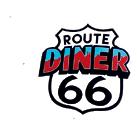
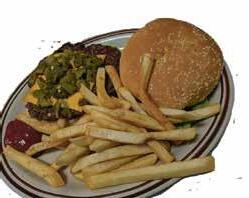
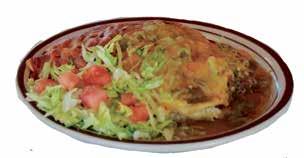
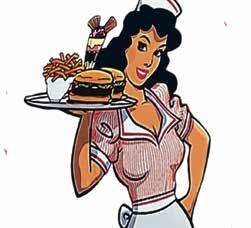
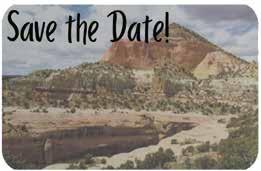
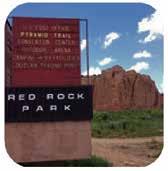

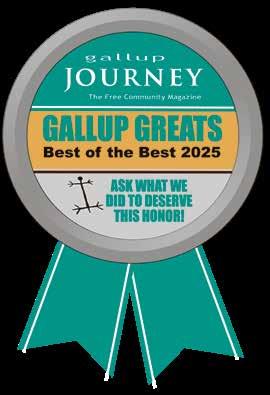

Best Place to Work Out:


Best Coffee Joint:
Best Green Chile:
Best Red Chile:
Best Tacos:
Restaurant:
Food

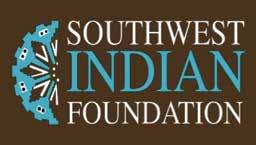
Distinguished visitors from across the country gathered to recognize and honor the dedication and efforts of our service members. The day included informative presentations, a guided tour of the SWIF warehouse, and, most meaningfully, a heartfelt visit with Paddy King and family in their new home.
A highlight of the day was the unique opportunity to witness a traditional Navajo home blessing—an experience that left a lasting impression on all in attendance. The event was filled with gratitude, pride, and a profound sense of accomplishment shared by both soldiers and guests alike.
Project Manager Lt. Appiah expressed his heartfelt gratitude for the opportunity to provide soldiers with valuable real-world training, while also honoring the profound privilege of supporting a fellow veteran. His words echoed the spirit of service and community that defined the day.
u Mr. William G. (Bill) Fitzhugh – Acting Principal Deputy Assistant Secretary of Defense for Manpower and Reserve Affairs
u Sgt. Major Scott J. Holzerland – Senior Enlisted Advisor, Assistant Secretary of Defense for Manpower and Reserve Affairs
u Colonel James T. Hogan – Director of Innovative Readiness Training, United States Air Force
u Captain Douglas Whimpey – Commodore, Naval Construction Regiment 1
u CMDCM Robert M. Marshall – Command Master Chief, Naval Construction Regiment 1
u CDR Donald J. Peterson – Commanding Officer, Naval Construction Battalion Two Two
u CMDCM Scott A. Johnson – Command Master Chief, Naval Construction Battalion Two Two
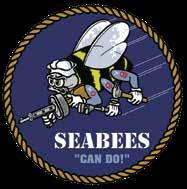
Tuesday, June 24, 2025
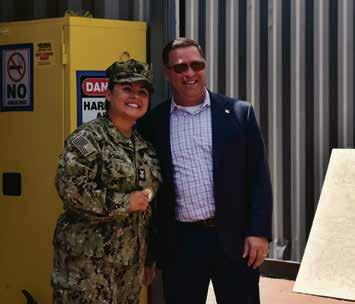
Assistant Project Manager CE1 Dominguez & Mr. William G. (Bill) Fitzhugh.


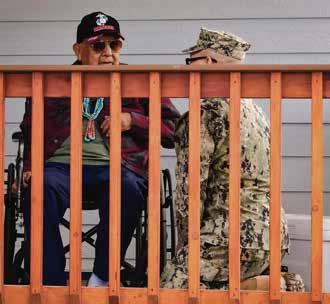
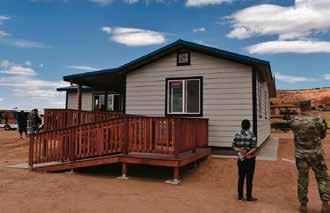
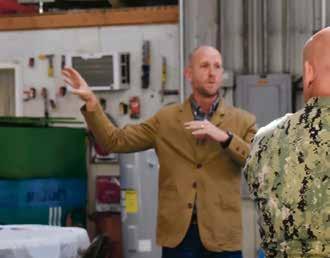
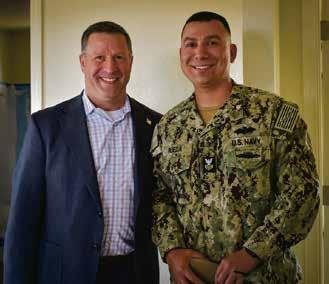

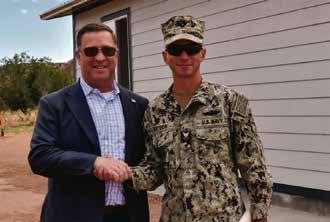
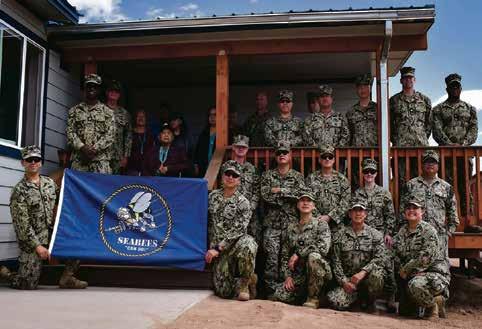

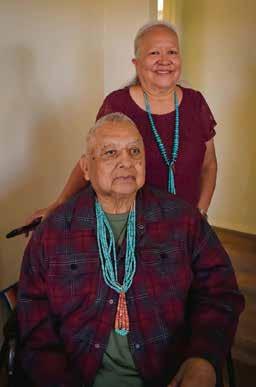
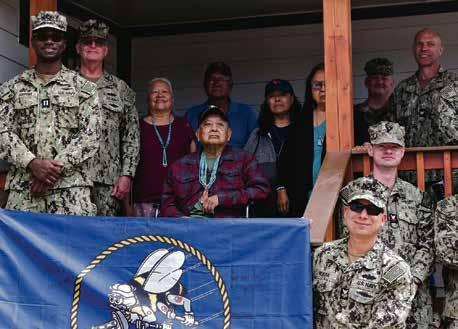
By John Lewis Taylor
Martin Link first set eyes on Gallup as a twelve-year-old. Martin’s father, Lucian, was moving the family, mother Lucile and younger brother Steve from Madison, Wisconsin to Brawley, California where he in 1946, was to take a job as a mail carrier. During the family trip along Route 66, they stopped for the night at Gallup’s El Rancho Hotel. Years later Martin would return to Gallup and become its chronicler.
After finishing high school in Brawley, Martin chose to attend college at the University of Arizona and majored in archeology and history. After graduation, Martin took a job as a seasonal ranger-archaeologist at Canyon de Chelly National Monument. However, Martin’s career in Arizona was interrupted by the Selective Service draft. He would spend two years in the Army before returning to the Southwest.
Back in the Southwest, he did archaeological field work for the Navajo Nation. In 1961, Martin became the first director of the Navajo Tribal Museum. At that time, the museum was located in a log cabin on the Tribal Fair Grounds in Window Rock, Arizona. In 1963, Martin created the Navajo Nation Zoo when a bear cub was gifted to the museum. He also helped established the Navajo Parks and Recreation Department with the Monument Valley Tribal Park.
In 1968, Martin was placed in charge of the Navajo Centennial celebration marking 100 years since the signing of the Treaty of 1868 between several Navajo leaders and the United States government, and the tribes joyful return to their homeland.
The plan developed was to hold a re-enactment of the treaty signing at Fort Sumner, and the return to Dine’Bi Ke’yah. To make the ambitious project a reality, Martin traveled the route of the “Long Walk” to meet with local leaders and gain their support, funding, and advertising for the event.
On the 28th of June,1968, 150 Navajos began a nearly 354-mile journey by charter bus from Window Rock, Arizona to Fort Sumner, New Mexico.
At Fort Sumner, on June 30th 3,000 people took part in the reenactment of the signing of the Treaty of 1868. Speakers and dignitary guests included Navajo Tribal Council Chairman Raymond Nakai, Governor David Cargo of New Mexico, Secretary of the Interior Stewart Udall. Among the re-enactors were Graham Homes the Director for Navajo Area B.I.A. who portrayed General William T. Sherman, and Howard Gorman, the grandson of Navajo leader Barboncito, who took on his grandfather’s role.
After the ceremonies, a parade, featuring the re-enactors and led by an Army band from Fort Bliss, made its way through the village of Fort Sumner. A barbeque followed hosted by the local Chamber of Commerce. That night the Navajos camped at Bosque Redondo. Martin described that night as being very spiritual.
The next day the Navajos began the journey home and in each major town along the way there were local celebrations. A final celebration was held at the Navajo Tribal Fair grounds as a last event of the return from Hwe’eldi.

Martin Link said of the Centennial Observance, “ It is time again to reaffirm the bond of friendship and coexistence between these (the United States and the Navajo Nation) two nations.”
Yet another task for the Centennial was a contest for a design of a flag for the Navajo Nation that would reflect the progress made since 1868. As museum director Martin collected the design submissions. When the contest closed there were over 400 submissions. Jay R. DeGroat a student at New Mexico Highlands University from Mariano Lake was the winner. DeGroat’s flag design emphised the resilience of the Navajo people and how far they have come since the “Long Walk”.
While at the museum, Martin became interested in the Navajo Code Talkers role in World War II and helped to organize the Code Talker Association in 1971. Martin served as coordinator of the Code Talkers for many years and was made an honorary Code Talker for his efforts. When Martin left the Navajo Nation the headquarters for the Code Talker Association moved to Red Rock State Park in Gallup.
Martin left the directorship of the Navajo Nation Museum in the late 1970s and became the director of the Red Rock State Park. One of his early tasks was to coordinate Gallup’s celebration of its centennial.
In 1881, the Blue Goose Saloon, a stagecoach stop at the end of track construction for the Atlantic and Pacific Railroad, is where David Gallup paymaster for the railroad chose to establish his office. Railroad workers came to Gallup for their pay checks and the booming settlement became known as Gallup.
Martin was placed in charge of the Centennial Committee. A highlight of the event was the Centennial Parade. Martin planned the parade to showcase the history of Gallup in chronological order. Beginning with Zuni and Navajo dance groups, followed by Hispanic settlers, mountain men, railroad workers, cowboys and dance hall girls, a troop of cavalry from Fort Huachuca, Arizona, and several marching bands.
The Centennial committee also produced a flag and a calendar featuring an important Gallup historical event for each day of 1981.

The Gallup Inter-Tribal Indian Ceremonial, Gallup’s signature event, was held at the Red Rock Park and an important duty of the park director was to work closely with the Ceremonial Board to make sure the Ceremonial had all the resources and facilities they needed to hold a quality event. Martin made sure that all went well.
Years before his term as park director, he was a supporter of the Ceremonial. As Navajo Nation Museum director in 1963, he provided a temporary museum room in the Ceremonial Exhibit Hall depicting artifacts showing and describing pre-historic Southwest Cultures. In 1968, he served on the Arts and Crafts committee for the Ceremonial. In 1971, Martin was a member of the Ceremonial Board of Directors as they planned for the Fiftieth Anniversary of the event. During the turbulent times of the 1970s Martin defended the purpose of the Ceremonial as a tribute to the American Indian and not an exploitation of Native cultures.
Years after he left the Park’s directorship, he wrote brief histories of each decade of the Ceremonial. First appearing in serial form in the Gallup Journey and in full, 1920s to 2020s, in the 100th Ceremonial Program, and as a poster display at the Rex Museum during the Centennial celebration.
After leaving Red Rock Park in 1982, Martin taught for several years at the University of New Mexico-Gallup and Navajo Community College. His courses were well attended and known for their originality and student discussions. A course enjoyed by many was his “Gallup: A Traffic Jam in the Desert.”
Martin was a deeply spiritual person. He was drawn to the concepts of Celtic Christianity, his own Welsh heritage, and the similarities between Celtic spirituality and Navajo culture.
In 1999, Martin and a group of friends met at the First United Methodist Church and
formed a loosely knit organization known as the “Friends of the Celts.” For fifteen years the “Friends” sponsored a two-day event known as the “ Celtic Weekend: A Celtic Festival of the Arts and Spirituality” and held each year between March 1 and March 17, the feast-days of Saints David and Patrick. Each of the gatherings began with a reading of St. Patrick’s Breastplate and a Navajo Blessing followed by a Celtic hymn. There were lectures on various spiritual and historic topics, music and dance, plays and skits, and vendors with goods for sale or trade.
Martin was active in the community and was a charter member of the Plateau Sciences Society a group founded in the early 1970s when Martin was director of the Navajo Tribal Museum. The purpose of the Society was the study and appreciation of the Colorado Plateau and its people.
The Society met monthly at the museum. The meeting hosted speakers including notedhistorians, archeologists, and artists. There were field trips to points of interest along the Colorado Plateau.
In 1971, the Society crafted a historic marker to be placed at the Travel Shrine at Fort Sumner.
When Martin left the directorship of the Navajo Museum, he moved the headquarters of the Plateau Sciences Society to Gallup and continued its work.
An affiliate of the Plateau Sciences Society is the Fort Wingate Task Force, a group working towards the preservation, protection, and restoration of the unique and historic buildings that directly relate to Fort Wingate and the B.I.A. schools located on the site.
Martin was a charter member of the Sunrise Kiwanis Club of Gallup. This club was founded in 1974 to allow Kiwanis membership to those who could not attend the Noon meeting of the Kiwanis Club of Gallup. Most of the members of the Sunrise Kiwanis were educators. The focus of the Sunrise Kiwanians was youth literacy. Martin and fellow Kiwanian Chuck Wade in partnership with the non-profit Dictionary Project of Charleston, South Carolina, enlisted the Sunrise Club in a project to provide every third-grader in McKinley County a student dictionary.
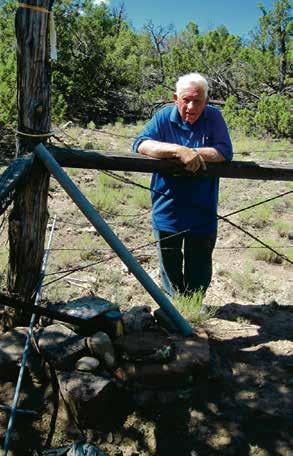
After the Sunrise and Gallup Kiwanis Clubs merged, Martin remained active supporting the groups many service projects.
Martin Link is indeed a “legendary local.” Martin devoted himself to the study of anthropology and history in the Southwest. He shared his knowledge with the public through the authorship of several books, publisher and editor of the Indian Trader, guiding tour groups, holding workshops, staging events, and teaching at the university level. He supported the Gallup Historical Society and the Historical Society of New Mexico.
Martin was also active in the community working to make Gallup and the region a better place to live by his active service in the Knights of Columbus, Kiwanis, and serving as an election judge. His presence in our community will be missed.
Martin Andrew Link of Gallup passed away on December 5 at the age of 90.
Mr. Link contributed to the Gallup Journey beginning in 2005, sharing his knowledge, writing, and historical insight with our readers for nearly two decades. He also made significant contributions to the Gallup Inter-Tribal Indian Ceremonial Magazine, lending his voice to the celebration and preservation of Native culture and history.
As we mark the 103rd Gallup Inter-Tribal Indian Ceremonial, we at the Gallup Journey honor Mr. Link’s legacy and express our sincere gratitude for the many ways he enriched our publication and community.
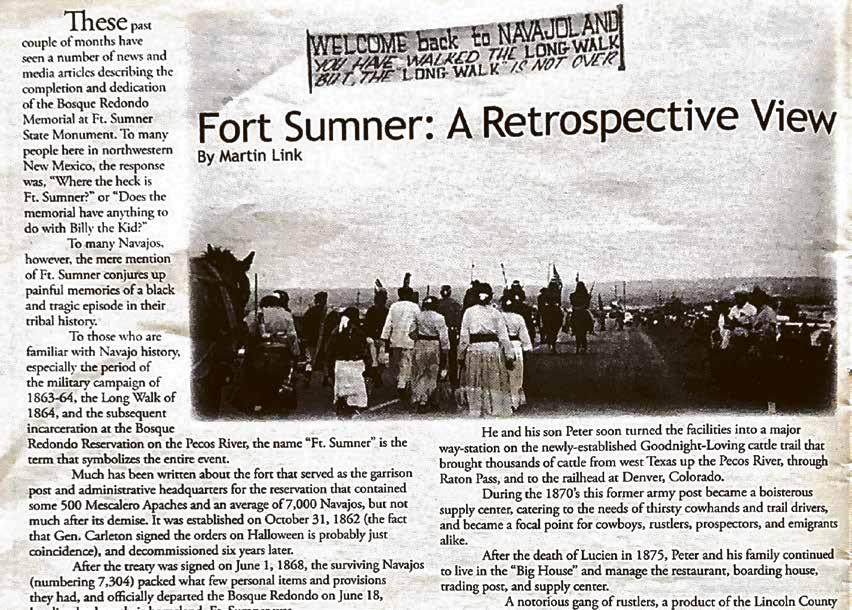
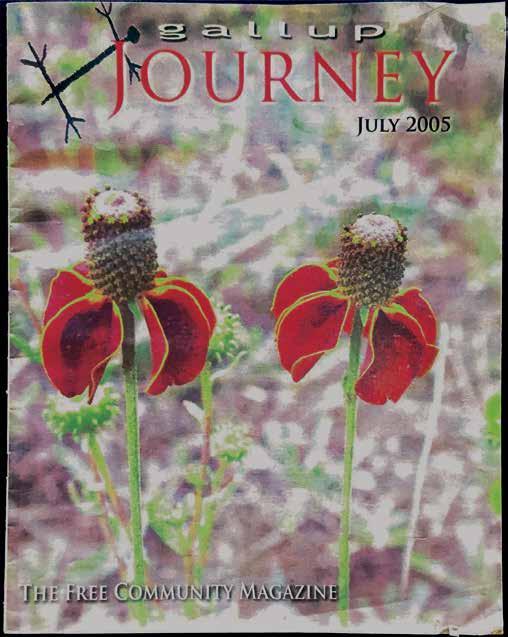

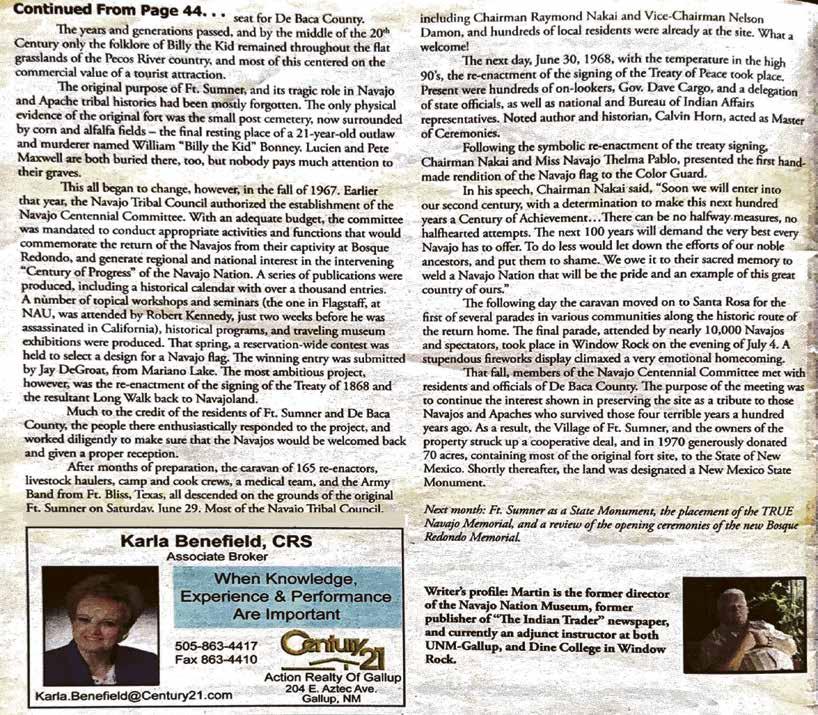
Church of the Holy Spirit, the Episcopal Church for the city of Gallup, raised funds this spring in support of Battered Family Services of Gallup. Members of the church delivered a check to the Battered Family Services staff Friday, July 28, at 10 a.m. at 207 S. Strong Drive.
The contribution is made through a Church of the Holy Spirit outreach program called “Rosemary’s Project,” named for longtime congregant Rosemary Trimmingham. Rosemary was a former teacher at Jefferson Elementary School and currently resides at the Grants Wellness and Rehabilitation Center (formerly Good Samaritan). She seeded the annual fundraising project from her personal quarter collection. Members of the congregation, and the community at large, also contributed. This is the second year of Rosemary’s Project which culminates each year on Mother’s Day.
Church of the Holy Spirit is the Episcopal Church for the City of Gallup and a mission church of the Episcopal Diocese of the Rio Grande. CHS is home to a diverse, vibrant community with a commitment to fellowship, service, and spiritual growth. Sunday services are held at 9:30 a.m. All are welcome.
Battered Family Services provides a safe environment for women and children in crisis, empowering them to advocate for themselves, change the way New Mexico addresses domestic violence, and working to eliminate family violence. The donated funds will be used to address any emergency needs of the families they support.
For more information, please contact Gail Browne, Church of the Holy Spirit, Clerk at (602) 341-8388 or gmail.com.
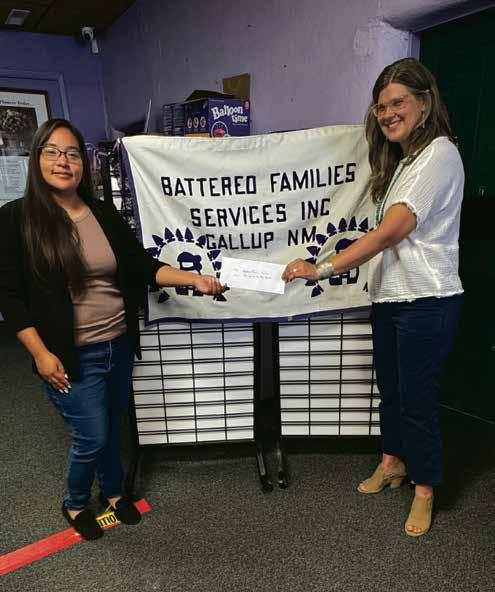

If you or someone you know is experiencing domestic violence, please call the Battered Family Services 24/7 crisis line at 505-722-7483.
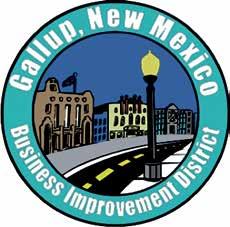
This event is sponsored & managed by Gallup Business Improvement District, Inc. a 501c3 Non-Profit Corporation, with support from the City of Gallup

Z-ART Museum-Gallery on Coal Avenue
AUTHENTIC ZUNI ART WORKS
Levitt AMP Concert in the El Morro Theater Doors Open at 6:30pm BANDITS ON THE RUN BAND
Exhibit @
ART123 Gallery:
By Christian Bigwater
Legacy of Creation showcases the artistic connection between a father and son, and how the father’s artistry forms a foundation that shapes the creative journey across generations.
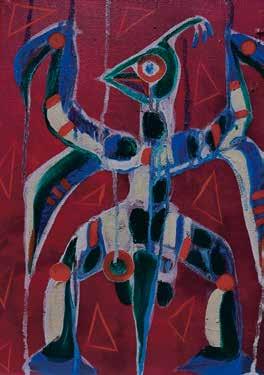

A show challenging stereotypes of women, in vivid color.


gallupARTS ArtsCrawl
Family Craft in the Event Center
Saturday, August 2nd, 7 - 9 PM
On Coal Avenue in Historic Downtown Gallup
Color a piece of a giant puzzle mural for the Bi-County Fair’s Community Art Show.
MakerSpace at ArtsCrawl
August 2nd • 7:00PM – 9:00PM
El Morro Event Center, 210 South 2nd St.
Join OFPL’s MakerSpace at ArtsCrawl! This month, we are exploring sublimation printing. Learn the full process—from design to heat pressing—and create your one-of-a-kind tote bag to take home. All materials are provided. Don’t miss out! #OFPLatArtsCrawl #OFPLCreates • Call (505) 863-1291 for more information.
OFPL PlaySpace at ArtsCrawl
August 2nd • 7:00 PM – 9:00 PM
Outside El Morro Event Center, 210 South 2nd St.
Join OFPL’s PlaySpace at ArtsCrawl for family fun and get creative! Build with our Big Blue Blocks and Dino Bones, made to inspire children to design new environments. Enjoy classic games like chess, checkers, dominoes, cornhole, and ring toss or try something different like badminton and shuffleboard! Draw with chalk and make giant bubbles. #OFPLatArtsCrawl #OFPLCreates • Call (505) 863-1291 for more information.
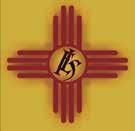
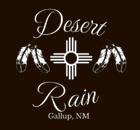
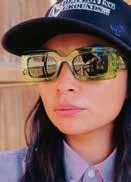
Gallup Business Improvement District Arts Crawl information — www.gogallup.com/events text or call: 505-413-6359
About a year ago, Kyle Manuelito, a project coordinator and peer coach with Capacity Builders Inc, reached out to the Journey to promote their DEA Family Summit in San Juan County. Mr. Manuelito educated us on the incredible work Capacity Builders and its partners located at NOVA III are doing to address the multiple crises our area faces, such as substance abuse, homelessness, and incarceration. This powerhouse, NOVA III, facilitates collaboration among various agencies to provide much-needed services to our community.
Capacity Builders is a program that offers a variety of services throughout the Four Corners area. They provide support and education focusing on risk reduction from drug and alcohol abuse. The CRAFT model— Community, Reinforcement, Approach, Family, Therapy—uses a form of counseling that emphasizes active listening and positive communication to empower individuals to seek treatment. They also offer traditional healing and Wellbriety talking circles.
This year, will be the 2nd year partnering with the Drug Enforcement Administration (DEA) Family Summit. This year it will be in McKinley County on August 26-27 at Red Rock Park. The summit is designed to serve as a portal through families and local organizations supporting families to access resources provided by federal, state, local agencies, and national and regional nonprofit organizations. The Journey had the honor of speaking with Gloria Dee, Senior Project Director at Capacity Builders; Ken Collins, Executive Director of the Hozho Center for Personal Enhancement; and Kyle Manuelito, Project Coordinator and Peer Coach at Capacity Builders. Mr. Collins introduced Lorenzo, who serves as a testimonial to the power of rehabilitation and works as a houseman at a local recovery home.
The DEA Family Summit began approximately six months of planning and collaboration among various entities. Ms. Dee emphasized the importance of her team having “boots on the ground” to connect with and educate individuals on the reservation.

The Four Corners Health Network is a consortium where Capacity Builders Inc and like-minded entities come together to provide resources, such as the Rural Communities Opioid Response Program, peer recovery coaching, and other services, with cultural and spiritual considerations in mind. This
family summit will provide an opportunity for education, resources, and inspirational testimonials for families in McKinley County. Ms. Dee would like to highlight that her team has assembled a judicial panel for this event. Families will have the opportunity to ask questions like: “Why is it taking so long
to address criminal complaints?” There are many victims out there. Representatives from the Navajo Nation Police, McKinley County Sheriff’s Office, New Mexico State Police, Bureau of Indian Affairs, and attorney offices from both the Navajo Nation and the State of New Mexico will be present to answer these complex questions. Bernalillo County, through “Keep NM Alive” initiative, is sponsoring lunch, and Navajoowned Nizhoni Fusion Tea Co. will be in attendance. Navajo Nation Vice President Richelle Montoya will deliver a welcome address, and the Native Women Warriors will present the colors. Featured artist Irving Bahe, who created the beautiful ceremonial mural downtown, is the designer of their conference booklets and t-shirts. The first 100 registered participants will receive a free t-shirt.
While this summit offers an outstanding opportunity to showcase resilience, education, and resources, it’s important to recognize that the individuals organizing this event dedicate their lives to improving the community. Ms. Dee wants to acknowledge the work that the Drug Enforcement Administration El Paso Division has done in New Mexico. Mr. Manuelito emphasizes that “the opposite of addiction is connection.” At Capacity Builders Inc, they foster connection through cultural and spiritual competency. Mr. Collins of the Hozho Center acknowledges that factors such as “intergenerational trauma, learned hopelessness, lost trust, poverty, and traumatic brain injuries” contribute to the challenges of recovery. Many who work with this consortium have faced similar challenges and can relate on multiple levels. Mr. Collins brought in a true role model, Lorenzo, a houseman for residents 24/7, who has overcome many adversities and shares a powerful testimony.
Lorenzo’s story is one of transformation. Born in Shiprock and raised by his traditional grandparents, he spiraled into addiction and violence after a childhood of abuse, resulting in a traumatic brain injury. He lost custody of his children and ended up in Tuba City jail. It was during solitary confinement that he broke down while reading the story of Abraham in the Bible. “I was trying to be someone I wasn’t,” he recalled. “That Word hit me. I fell down in front of the gangsters and let go. I felt the love come back into me.” After four years of sobriety and treatment, he experienced a setback but barely escaped it. Now, he is 11 months sober and is taking courses in Human Services at UNM and ministry at his church. Now, he gives rides
to other residents, helps them navigate recovery, and shows—through his life—that redemption is real. “We’re all spiritual in a sense. And realizing and understanding that gave me that foundation for stability,” he said.
Here more testimonies on August 26th and 27th. Spread the word, there are resources and caring individuals who want to help.
“Great things can happen when everyone comes together for one purpose”, Ms. Dee notes.
Follow Four Corners Health Network and Capacity Builders to stay up to date! @fourcornershealthnetwork @Capacity Builders, Inc.
Website: www.capacitybuilders.info

• If you had to listen to one genre for the rest of your life what would it be? Hip- Hop or Classical

• Do you prefer headphones or earbuds?
• Do you prefer to listen to music in the house or in the car?
What’s your favorite hobby? Beadwork Tea or Coffee? Tea
Summer or fall? Fall
Angie Westika Hip hop Earbuds House
What’s your favorite hobby? Crafting Tea or Coffee? Water Summer or Fall? Fall

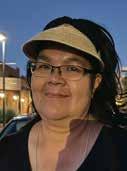

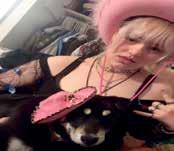

Felicia King Hip-hop Headphones House Adam Blea Hip-hop Earbuds Car
What’s your favorite hobby? Drawing Tea or Coffee? Tea Summer or Fall? Summer

What’s your favorite hobby? Listening to Frank Ocean music Tea or Coffee? Coffee Summer or Fall? Fall

Randiwa Tsosie Classical Headphones Car
What’s your favorite hobby? NMRA Navajo Nation Mud racing
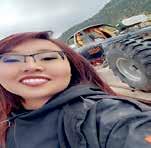
Tea or Coffee? Tea
Summer or Fall? Fall
Michaela Bartlett
What’s your favorite hobby? Going to the library with the kids Summer or Fall? Summer
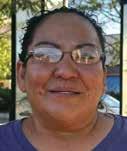
What’s your favorite hobby? Fixing & riding motorcycles Summer or Fall? Fall
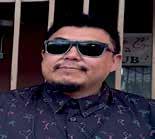

Kaylah Lee Classical Earbuds Car
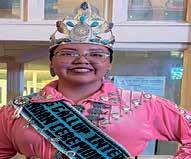

What’s your favorite hobby? Photography
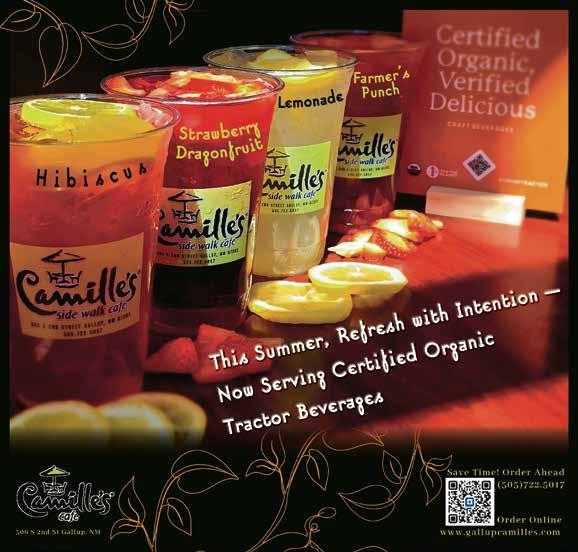
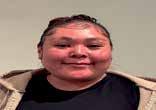
What’s your favorite hobby? Reading Tea or Coffee? Boba tea Summer or Fall? Fall
Loeza Chacon Classical Headphones Car Mikka Johnson Hip-hop Headphones Home



What’s your favorite hobby? Baking Tea or Coffee? Coffee Summer or Fall? Fall
Darin Tom Hip-hop, Headphones Car


Cristina Begay Hip-hop, Headphones Car

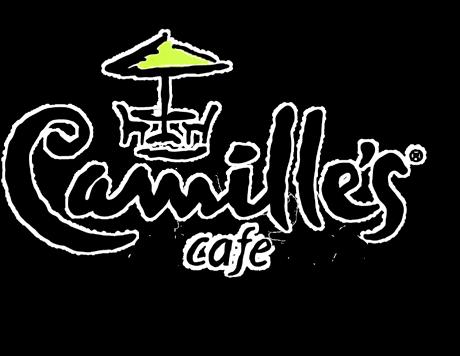

You may nominate anyone you feel is a “teacher” in your life such as a preacher, music or dance teacher, your mechanic, or really anyone who has taught you something of value and made a lasting impact!
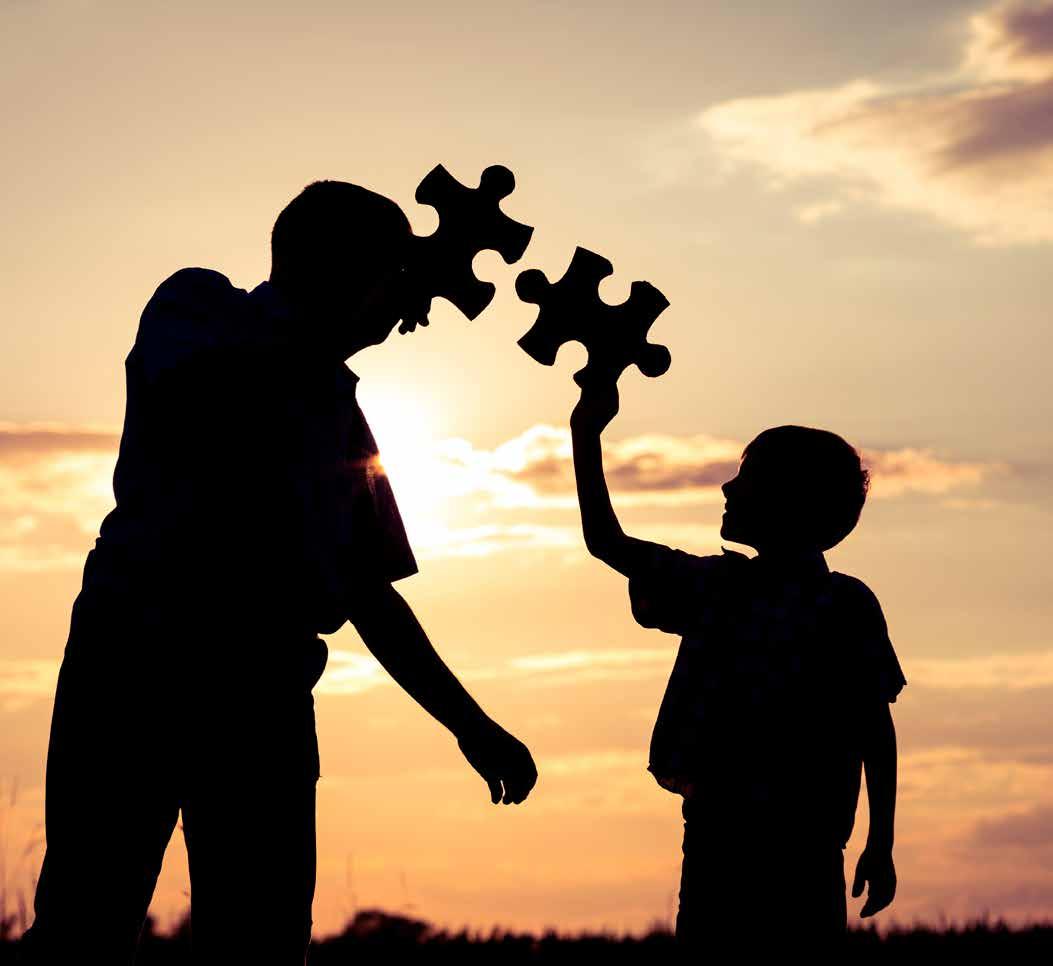
One teacher will be awarded with a FREE ENTREE each month, goodiebasket, and an article in the Gallup Journey.
Vote today at 306 S 2nd St
The current world record for the men’s indoor mile is 3:45.14, set by Jakob Ingebrigtsen from Norway in February 2025.

The current world record for the women’s indoor mile is 4:07.64, set by Faith Kipyegon, from Kenya, in 2023. In 2025, Kipyegon ran a mile in 4:06.42 at a Nike-sponsored event in Paris, but this time is not eligible for record consideration because it was not a sanctioned race.

Running is so good for you! Not only for your body, but also for your mind! It strengthens your muscles and bones, improves your heart’s health, aids in weight management, and reduces the risk of chronic diseases such as diabetes and heart disease. Running can also improve your mood, reduce stress, and help you sleep. And it’s fun to compete! Depending on how old you are, or if this is your first time, try running one lap around a track, time yourself, and see where you’re at! After that, keep practicing until you reach your goal!

High school boys record 400 meters (one lap around a track) 44.10 seconds held by Quincy Jones of Massachusetts High school girls record 400 meters (one lap around a track) 51.61 seconds held by Sydney McLaughlin of New JerseyYou can run short, fast distances, the 100 meter dash! Or long, slower distances, 26.2 miles! If you join cross country or track in middle school or high school, you’ll get to travel to different schools and compete against kids your age. Continuing to run after high school can take you to all kinds of different races in amazing places all over the world! You’ll meet people from different countries and have tons of fun, all while staying healthy and fit!
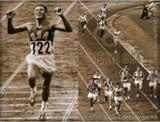

Look up the story of Billy Mills!
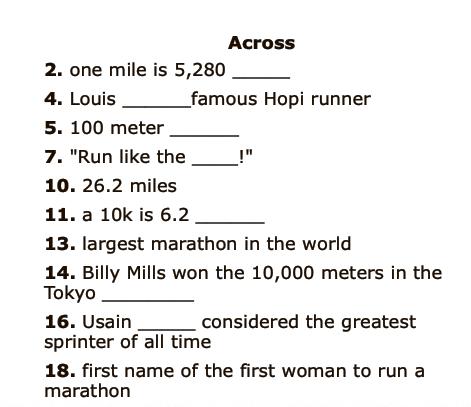

some average times:
6 years old - about 2 minutes and 10 seconds
7 years old - about 2 minutes
8 years old - about 1 minute and 50 seconds
9 years old - about 1 minute and 40 seconds
10 years old - about 1 minute and 30 seconds
11-13 years old - about 1 minute and 20 seconds
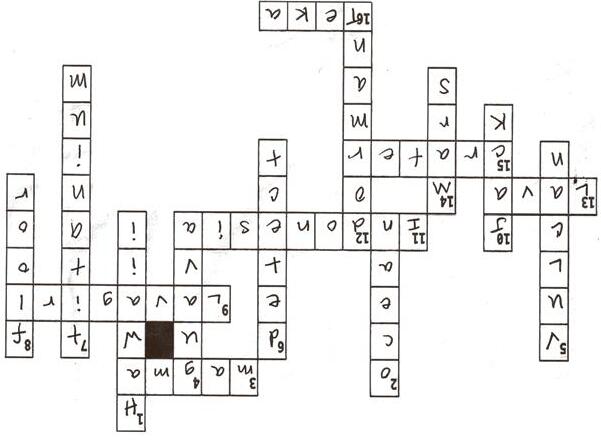
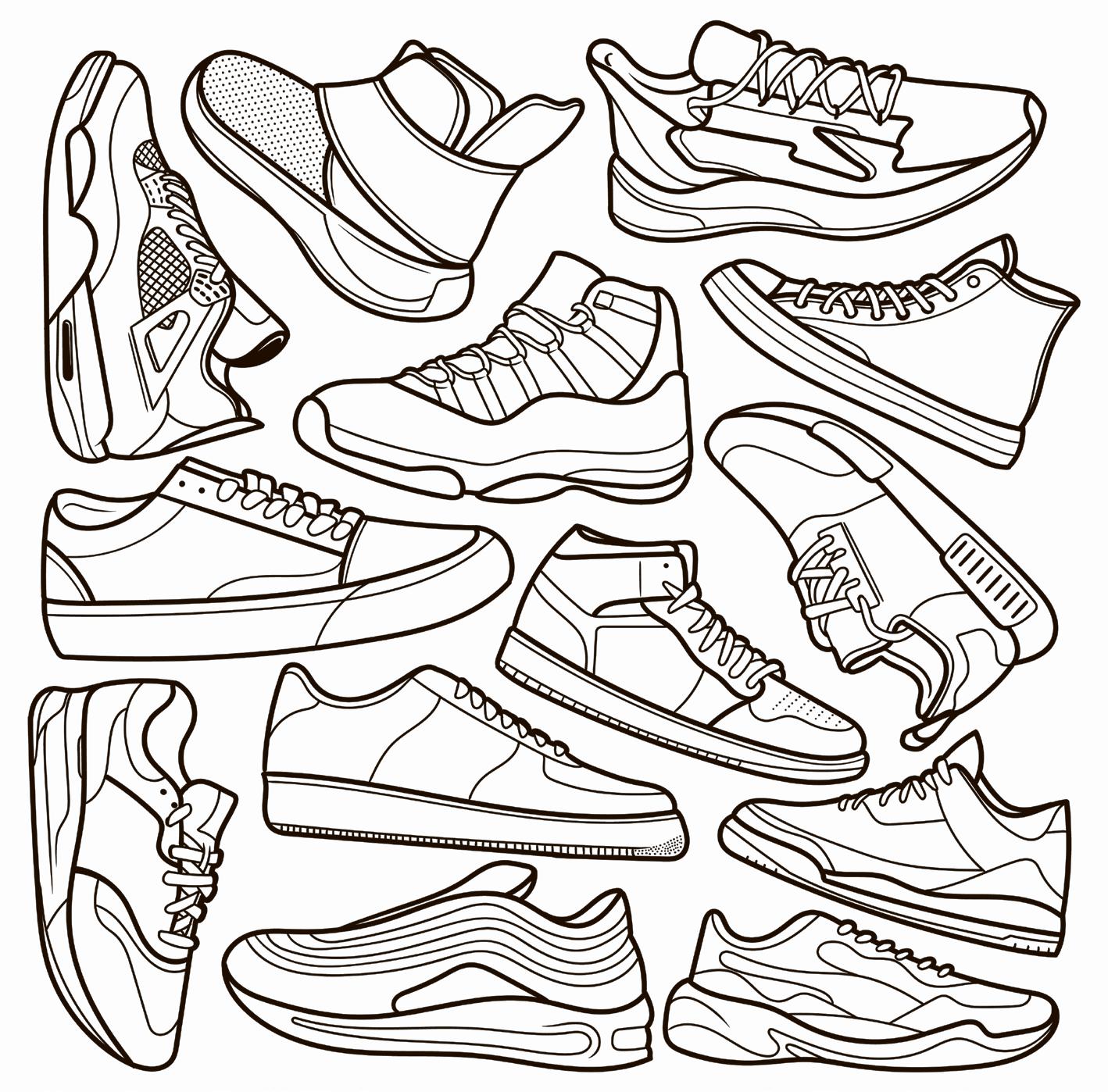

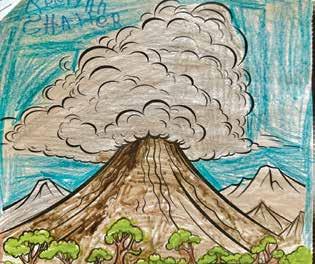

By Amanda Spruell
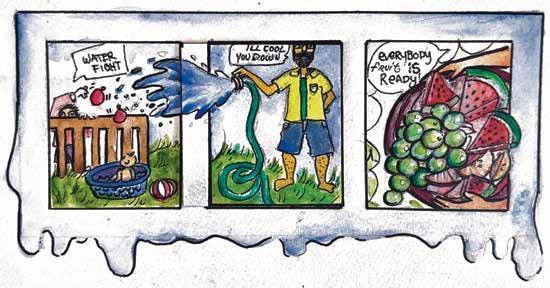
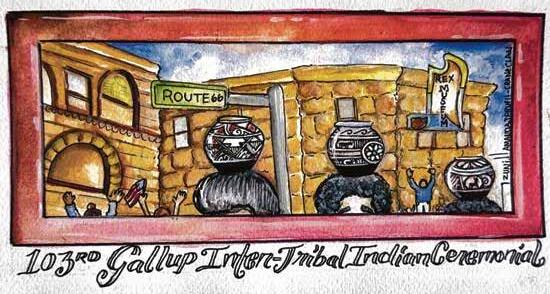
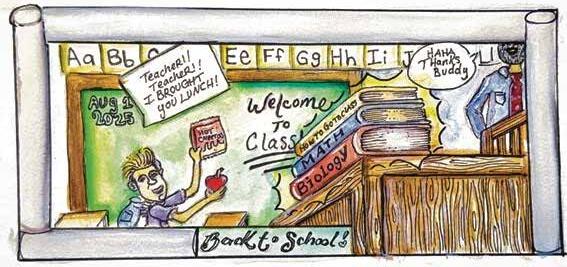


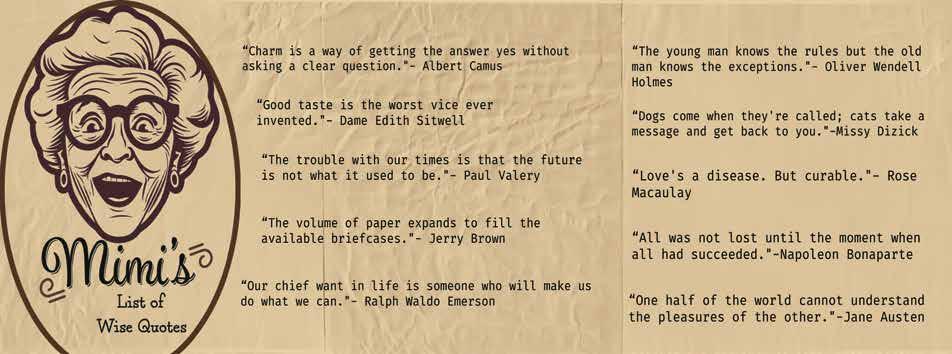

Friday - August 1, 2025
1:00PM - 6:00PM Artist Check-in Exhibit Hall
6:00PM - 9:00PM Friday Night Rides Courthouse Square
Saturday - August 2, 2025
6:30AM 5k Fun Walk/Run Ellis Tanner Trading Co.
8:00AM Open Junior Rodeo Main Arena
8:00AM - 6:00PM Artist Check-in Exhibit Hall
10:00AM - 10:00PM Native Music Festival Courthouse Square
TBA Ceremonial Iron: Tribal Gathering Deadlift Competition Courthouse Square
7:30PM Ceremonial Summer Night Rodeo Main Arena
Sunday - August 3, 2025
8:00AM - 6:00PM Best of Show Judging Closed to Public
Tuesday - August 5, 2025
2:00PM - 5:00PM Little Miss Ceremonial Luncheon Red Rock Park Pageant Tent
5:30PM - 7:00PM Royalty Pageants Meet & Greet hosted by Visit Gallup Summer Indian Dances at Courthouse Square
Wednesday - August 6, 2025
12:00PM - 3:00PM Miss Ceremonial Queen’s Luncheon Fire Rock Casino Event Center
6:00PM - 10:00PM Exhibit Hall Opening Night Gala RRP Museum Plaza “Horseshoe”
6:00PM - 7:45PM Pageant Meet & Greet/Photogenic and Silent Auction Exhibit Hall
7:00PM Iron Cowgirl Challenge Main Arena
Thursday - August 7, 2025
9:00AM Open Rodeo Slack Main Arena
9:00AM Pageant Traditional Foods Demonstration Marland Aitson Amphitheater presented by NTEC
10:00AM - 6:00PM Exhibit Hall Open Exhibit Hall
2:00PM PARADE ROUTE ROAD
CLOSURE BEGINS Downtown Gallup
7:00PM World Famous Night Parade Downtown Gallup
7:30PM Open Rodeo Roughstock Buckout Main Arena
Friday - August 8, 2025
10:00AM - 8:00PM Exhibit Hall Open Exhibit Hall
11:00AM Traditional Talent Presentations with Fashion Show Pageant Tent
11:00AM - 8:00PM Vendor Marketplace RRP Museum Plaza “Horseshoe”
1:00PM - 7:00PM Amphitheater Performances Marland Aitson Amphitheater presented by NTEC
1:30PM Open Rodeo 1st Performance Main Arena
4:00PM Gourd Dance Pow-Wow Arena
7:00PM Miss GITIC & Little Miss Coronation Main Arena 7:00PM Voladores (The Flying Men) Pow-Wow Arena
7:30PM Pow-Wow Grand entry Pow-Wow Arena 8:00PM Traditional Night Dance Performance Main Arena
Saturday - August 9, 2025
12:00AM PARADE ROUTE ROAD
CLOSURE BEGINS Downtown Gallup 9:00AM Morning Parade Downtown Gallup 9:00AM Navajo Song & Dance Registration Song & Dance Pavilion 11:00AM Navajo Song & Dance Grand Entry Song & Dance Pavilion 11:00AM - 8:00PM Vendor Marketplace RRP Museum Plaza “Horseshoe” 11:00AM - 8:00PM Exhibit Hall Open Exhibit Hall 1:00PM Inter-Tribal Skate Jam Gallup Skate Park 1:00PM - 7:00PM Amphitheater Performances Marland Aitson Amphitheater presented by NTEC
1:30PM Open Rodeo 2nd Performance Main Arena 2:00PM Gourd Dance Pow-Wow Arena
7:00PM Voladores (The Flying Men) Pow-Wow Arena
7:30PM Pow-Wow Grand entry Pow-Wow Arena
8:00PM Traditional Night Dance Performance Main Arena
Sunday - August 10, 2025
10:00AM Cowboy Church Marland Aitson Amphitheater 10:00AM - 1:00PM Exhibit Hall Open Exhibit Hall 11:00AM Navajo Song & Dance Grand Entry Song & Dance Pavilion
11:30AM Wooly Riding Pre-show Main Arena
12:00PM Open Rodeo Top 10 Short-Round plus Amigo Automotive Old School Days Main Arena Events subject to change REV7/11/25





FIRST DAY OF SCHOOL IS AUGUST 6TH